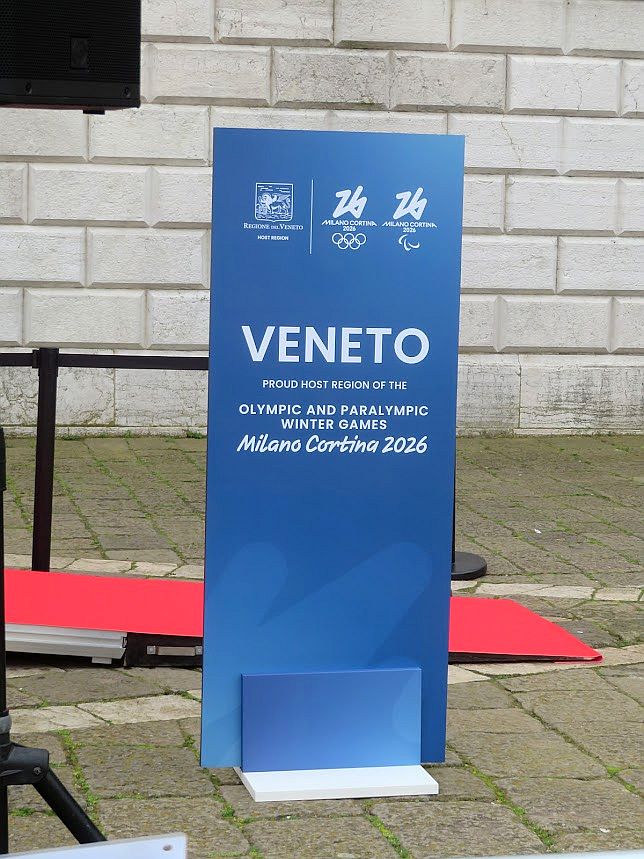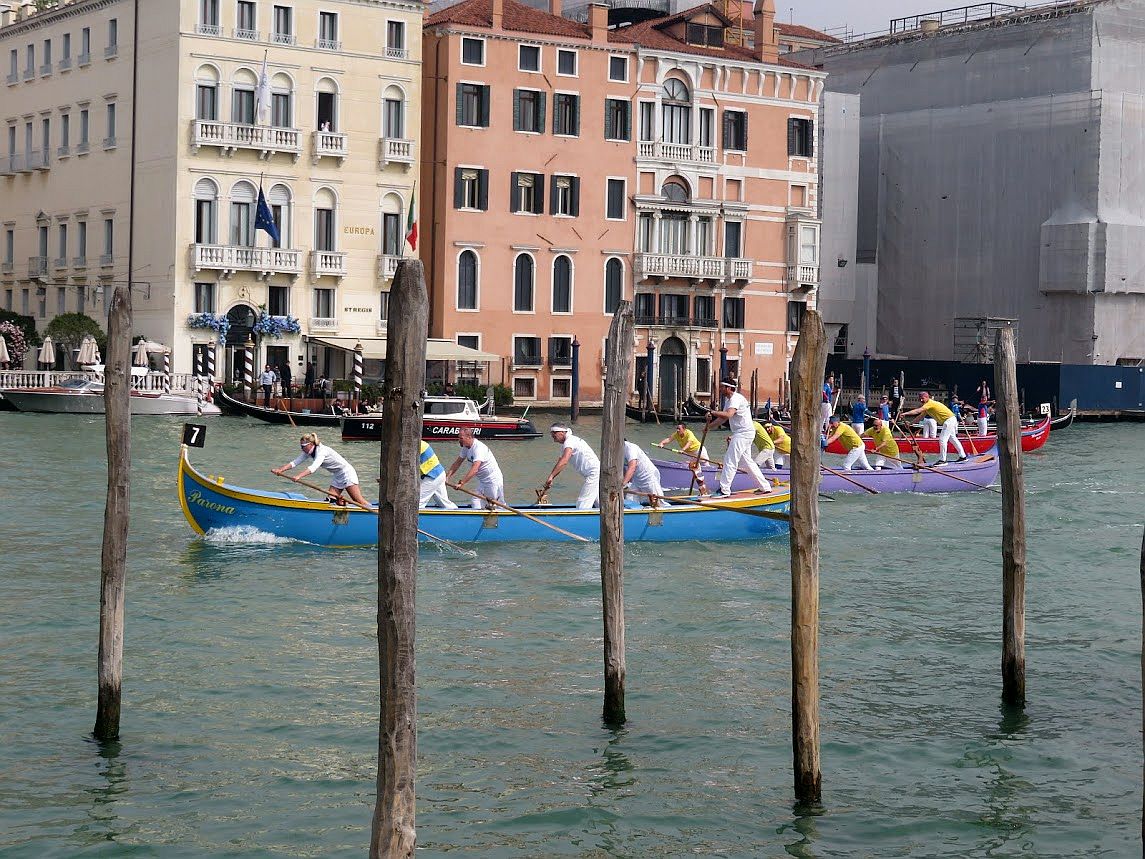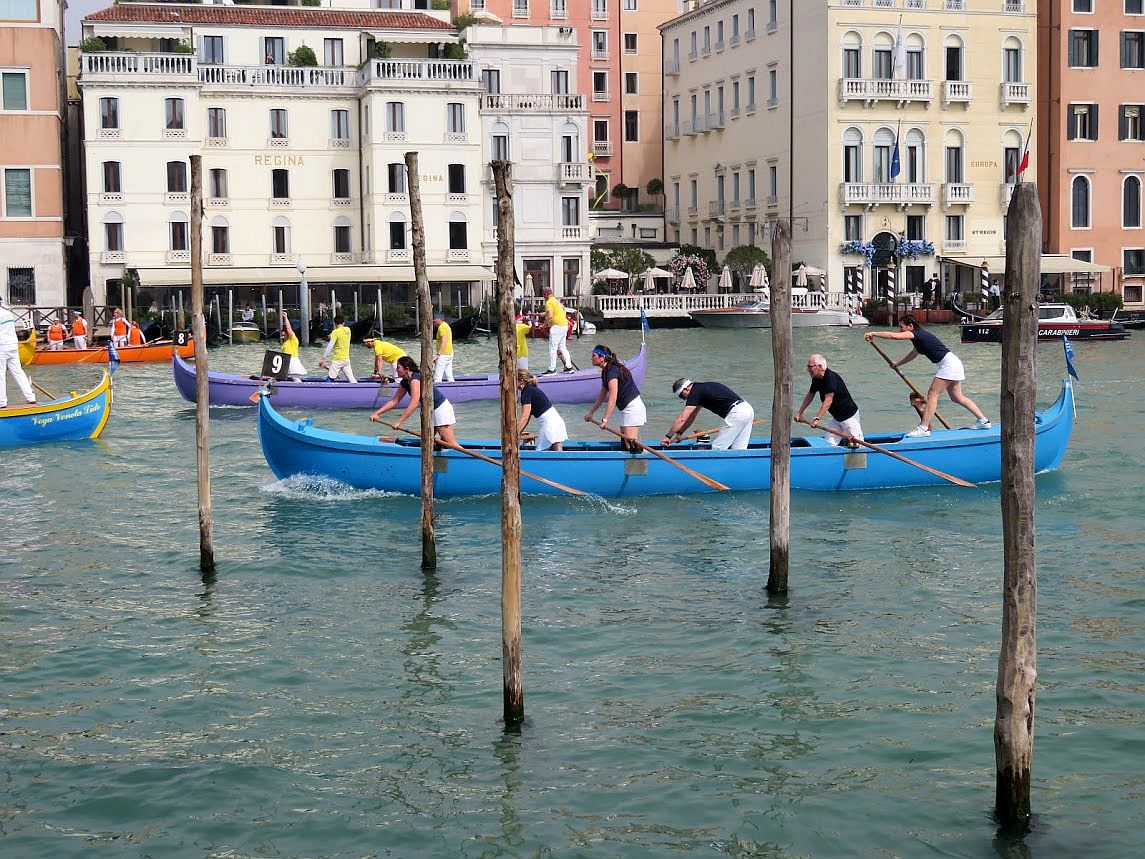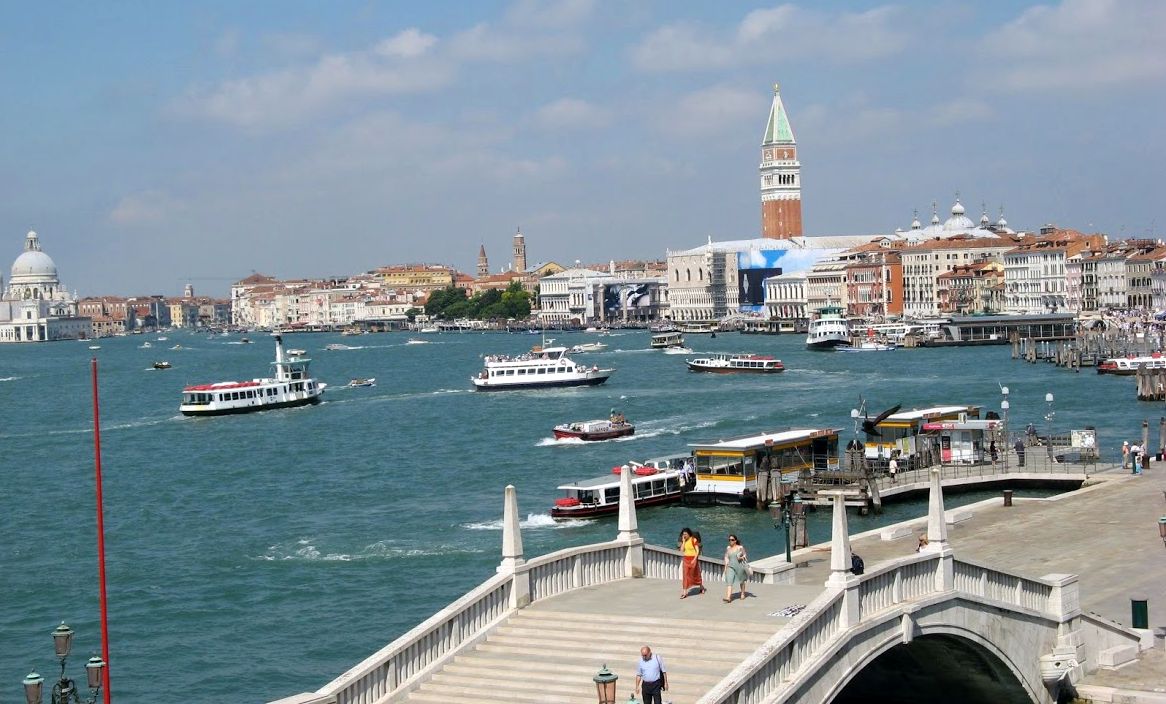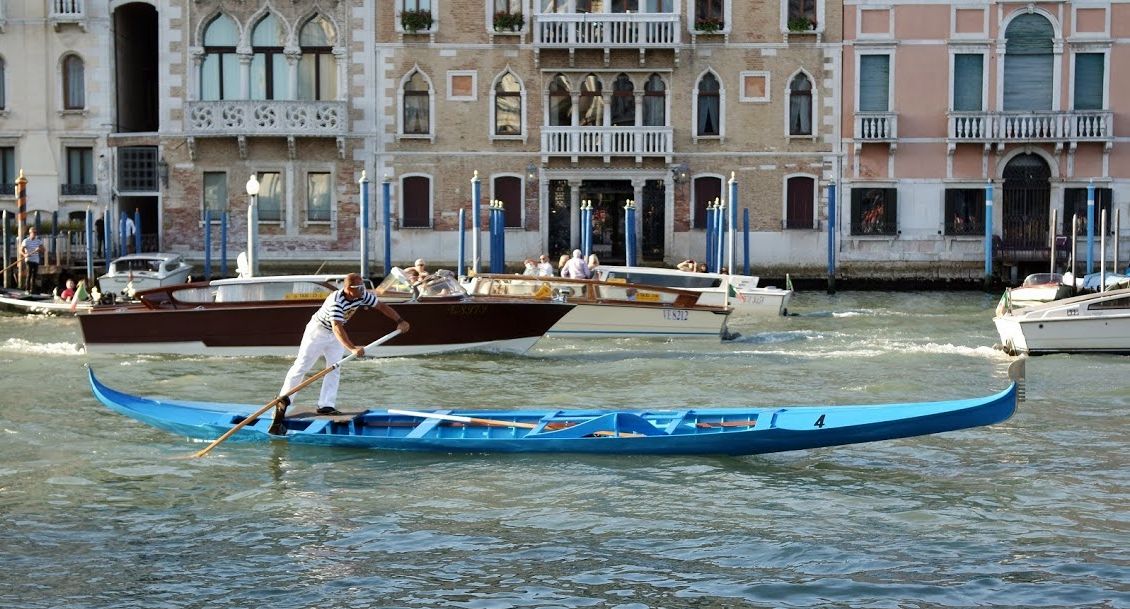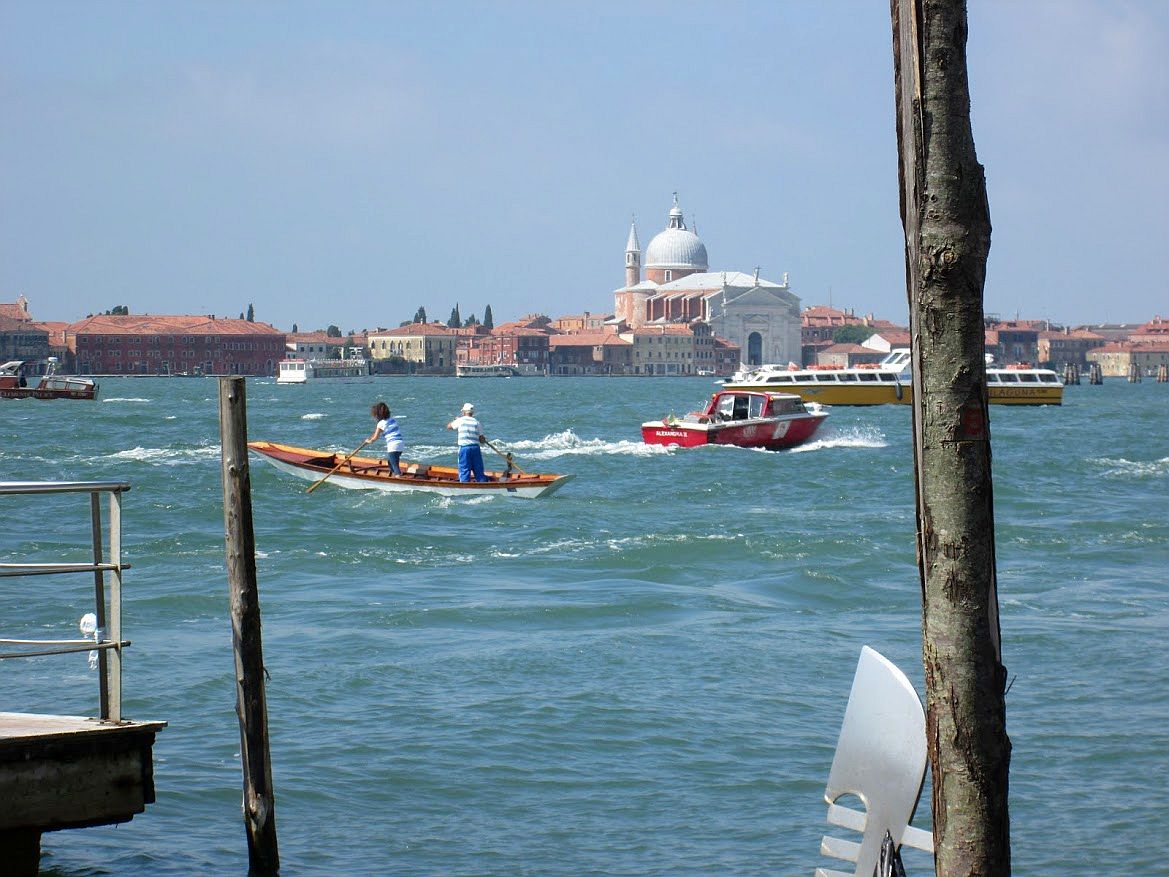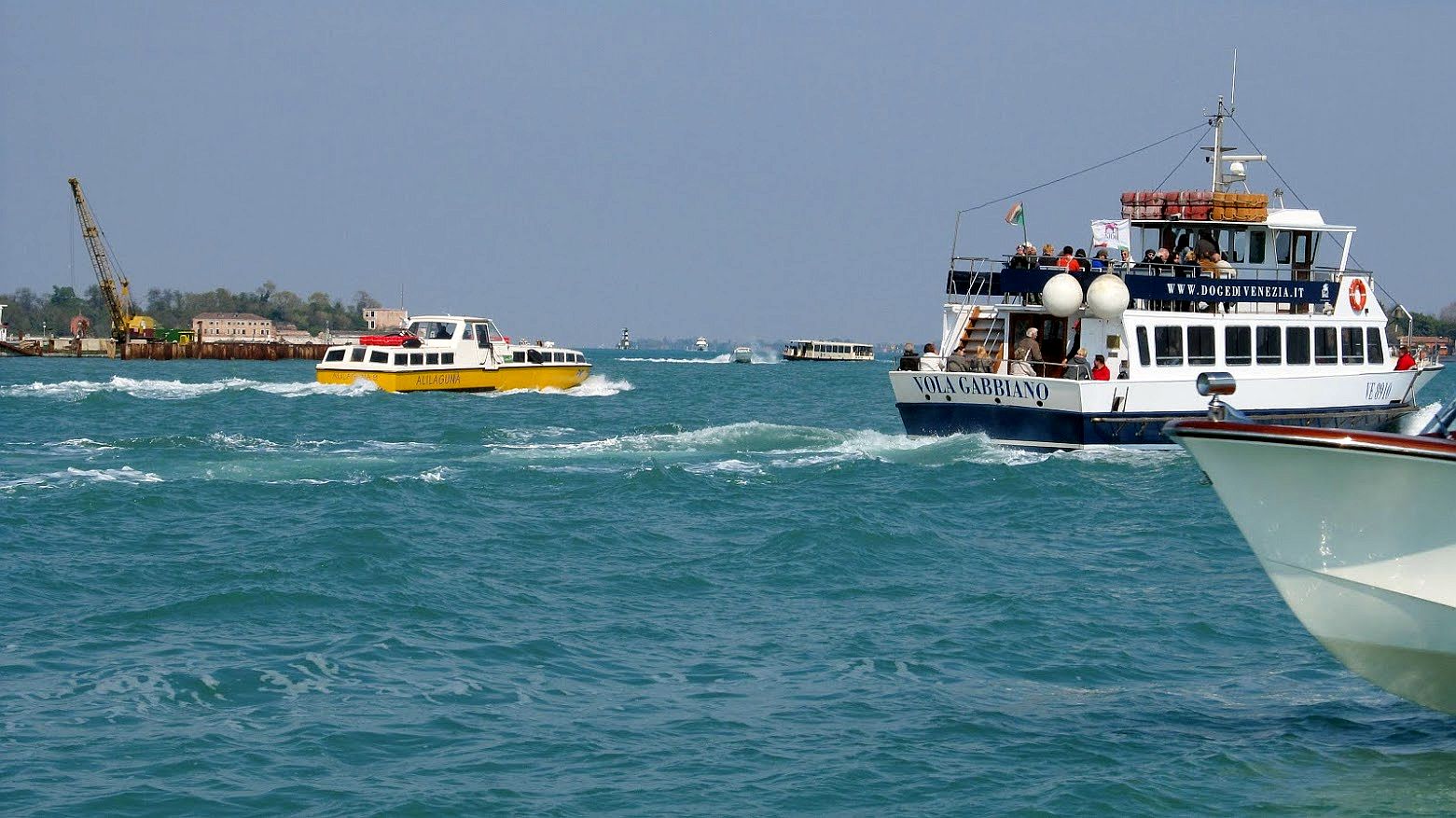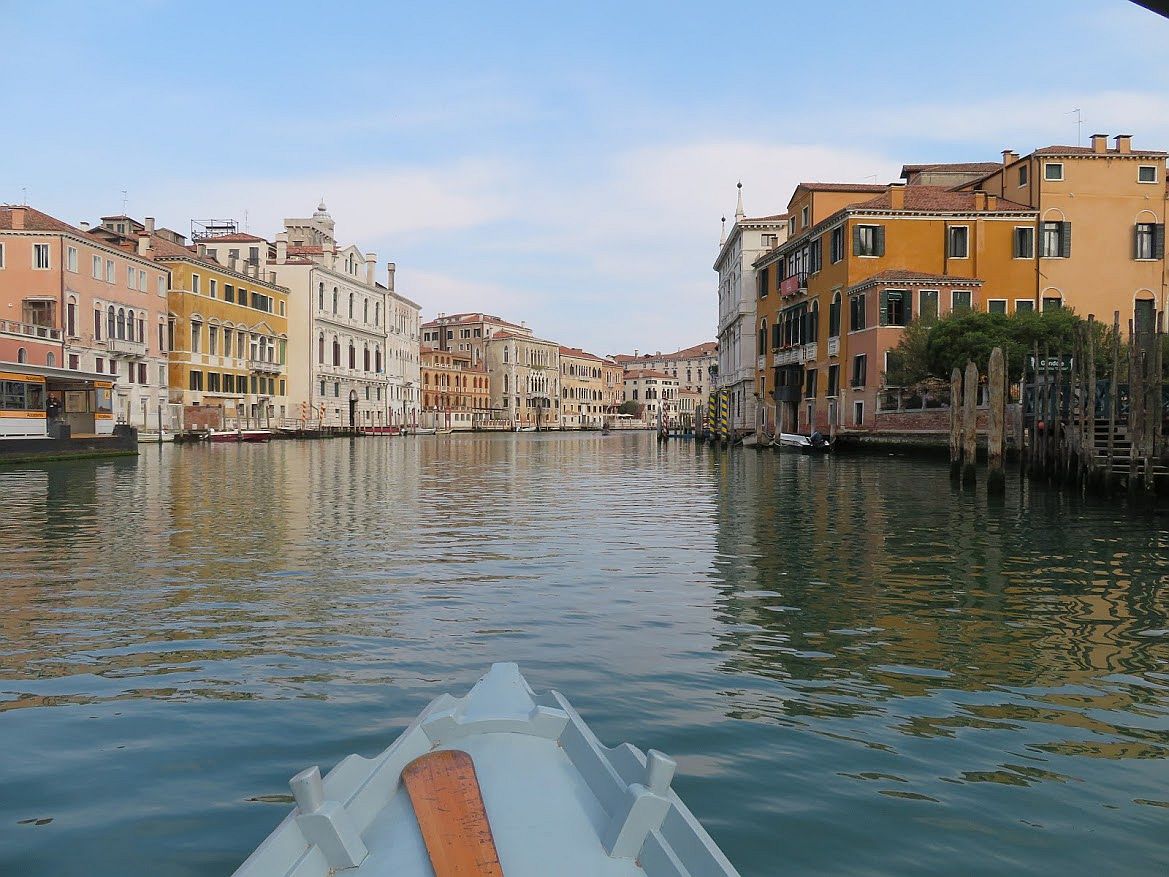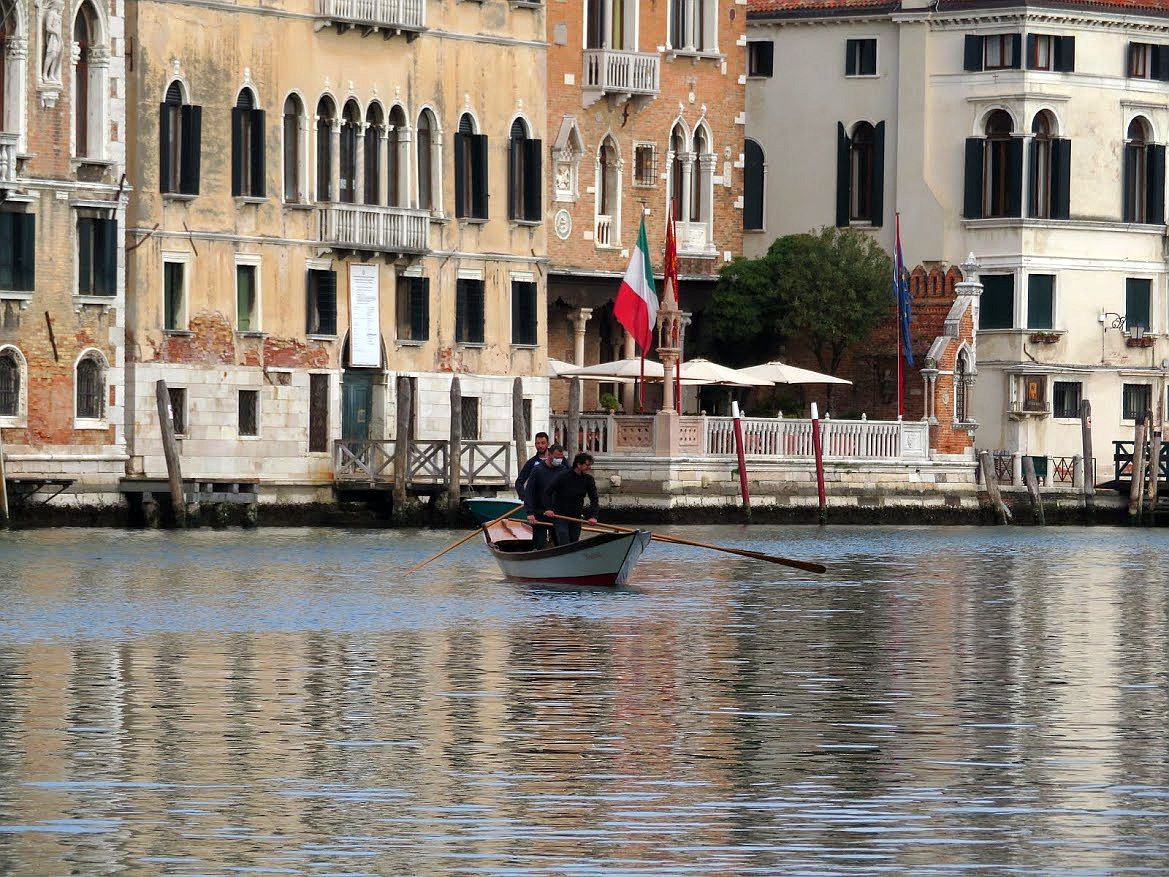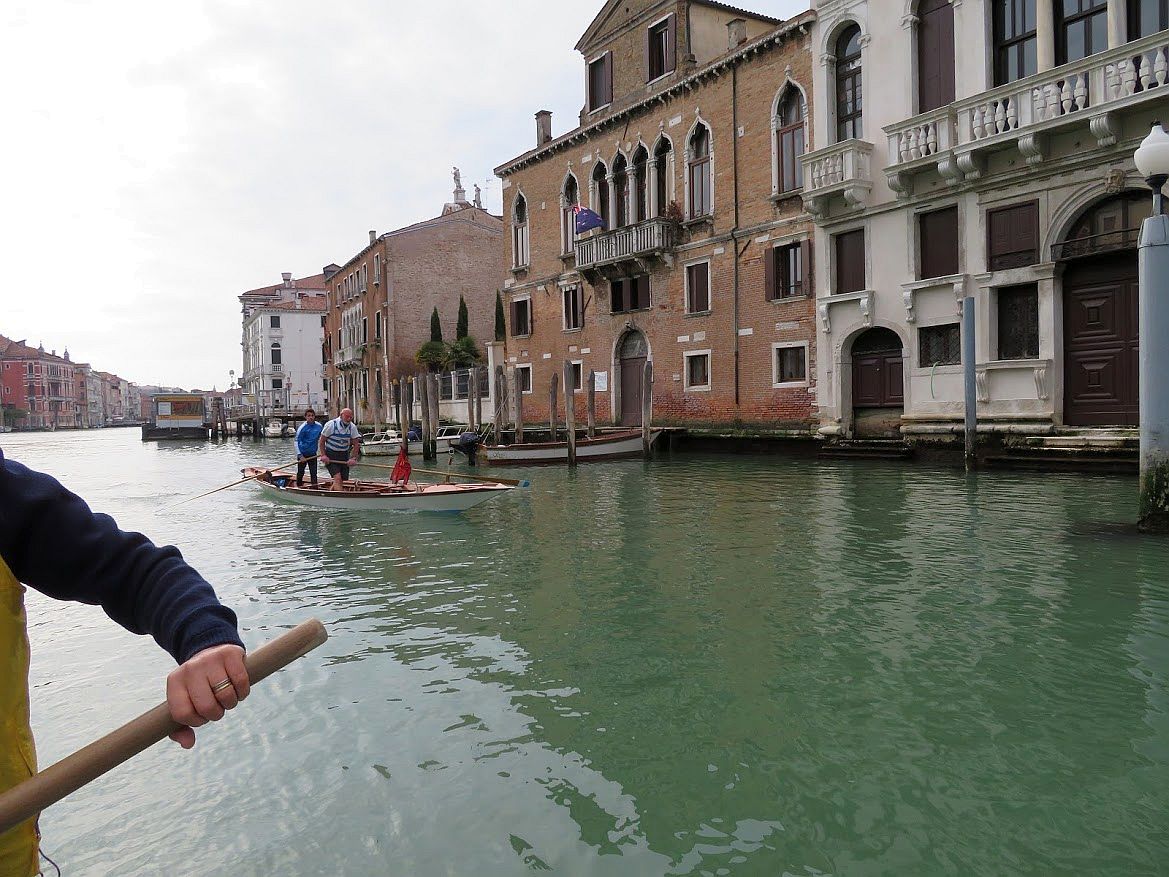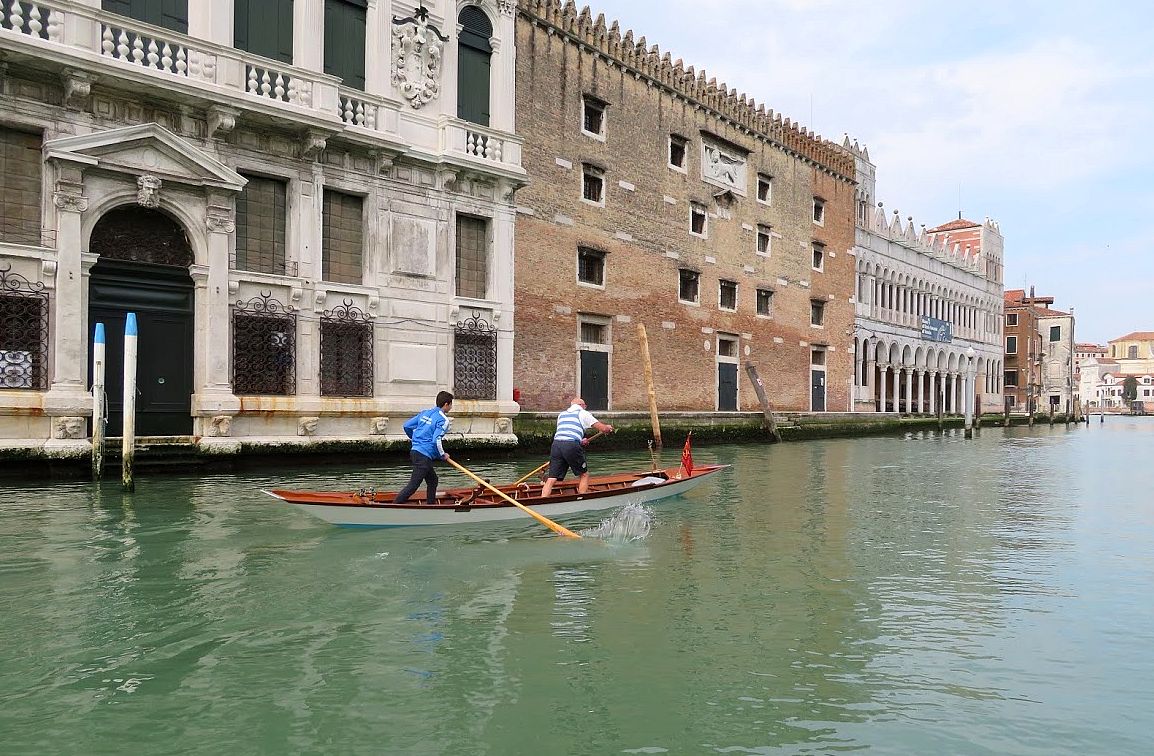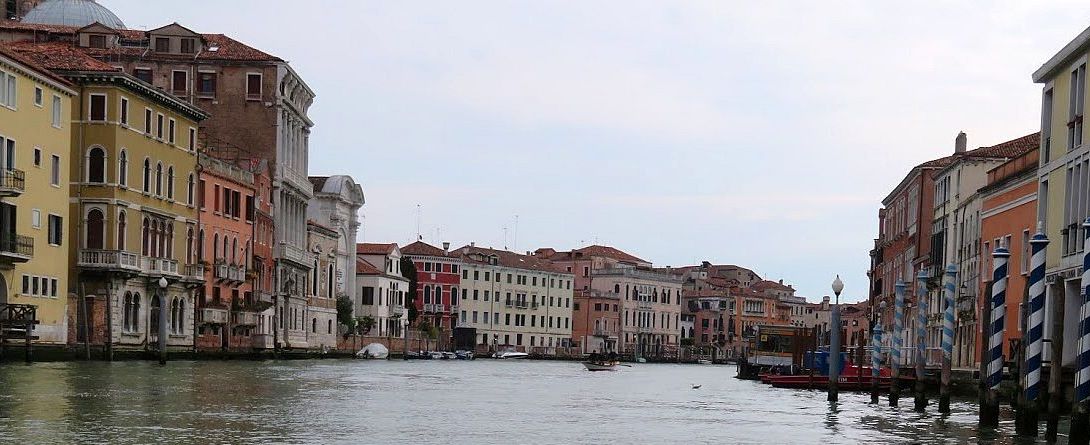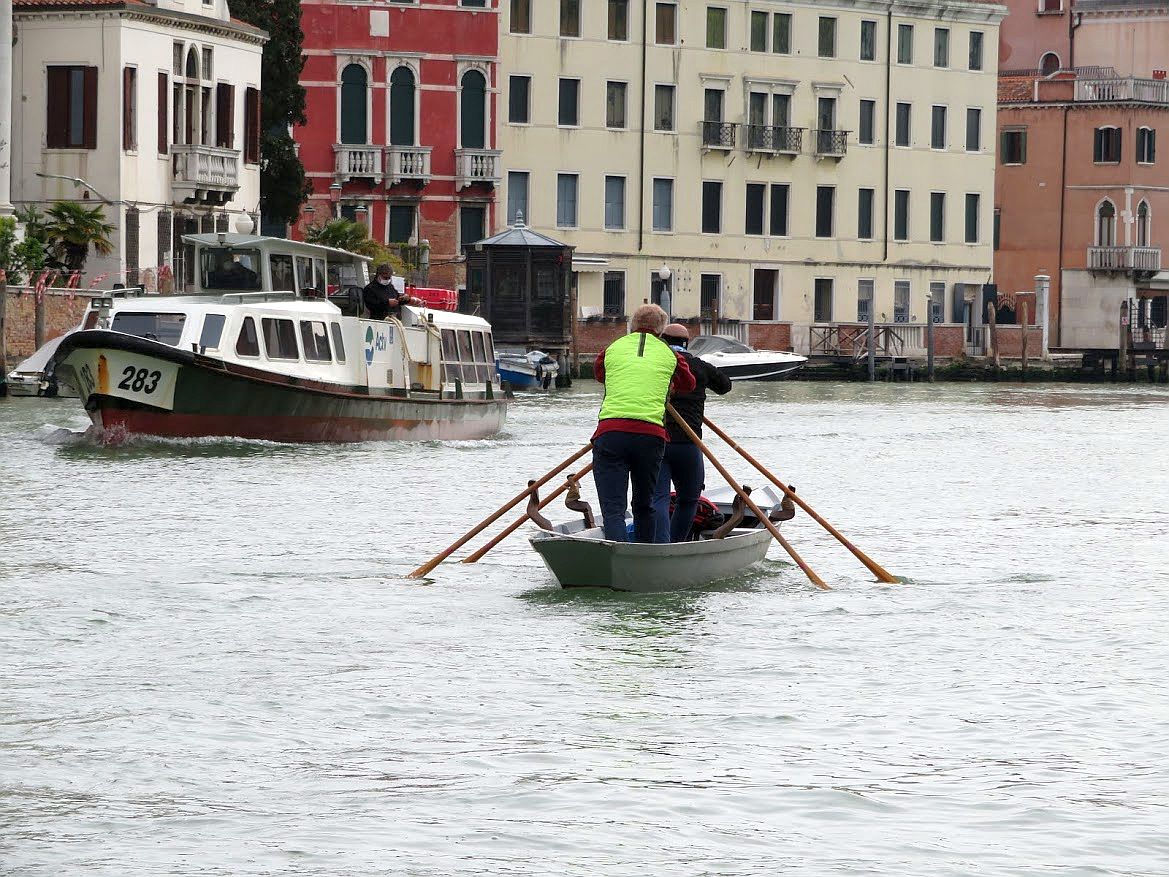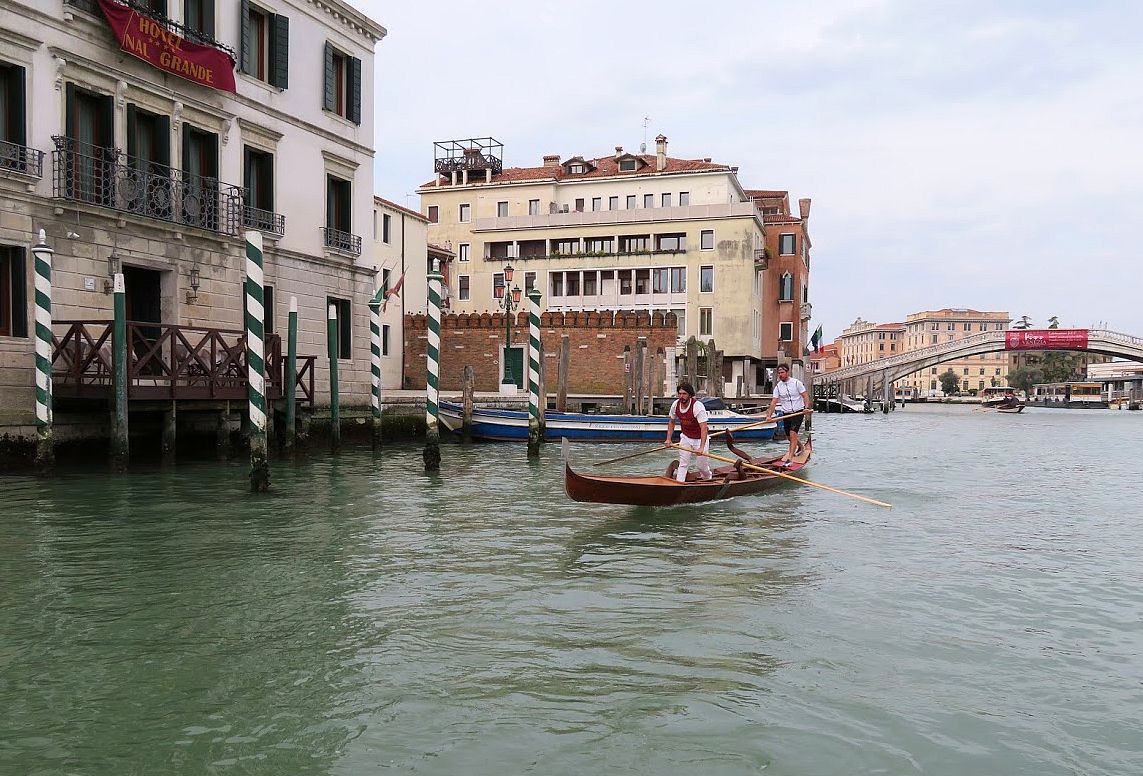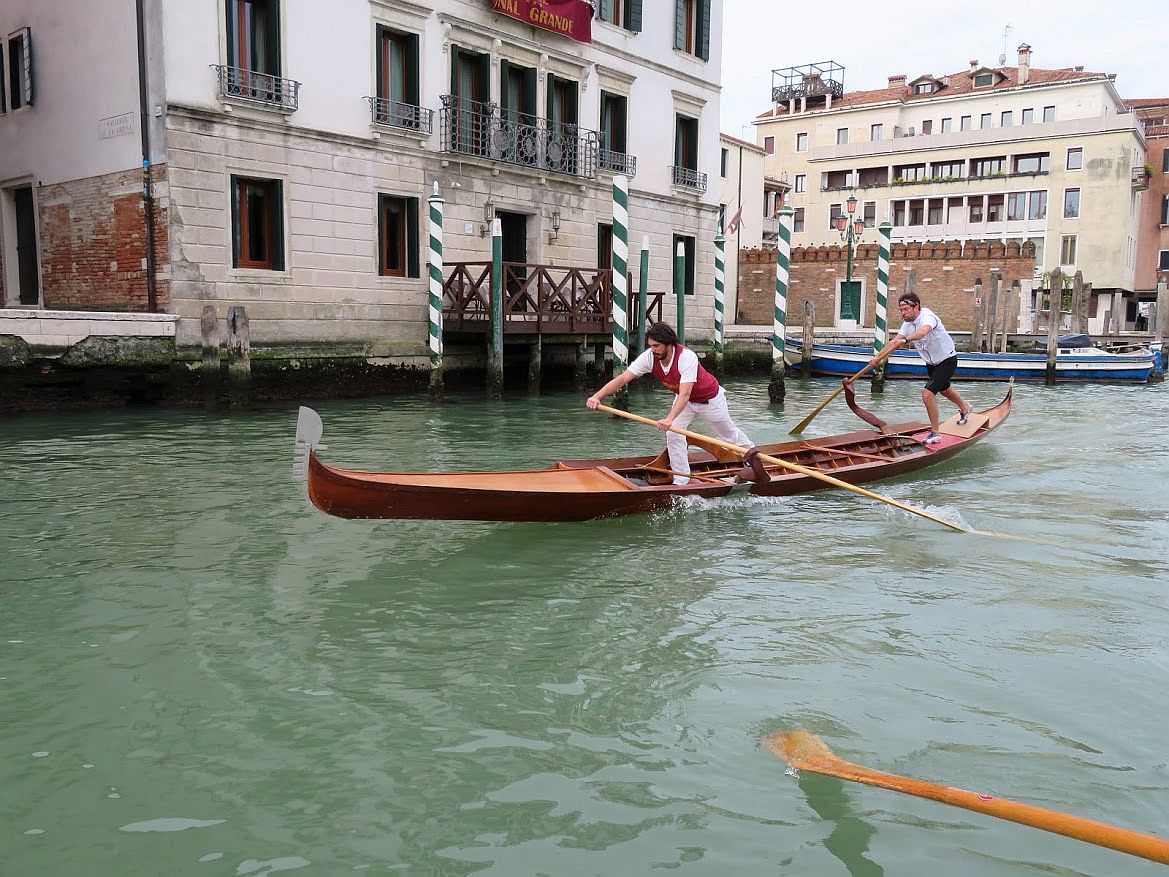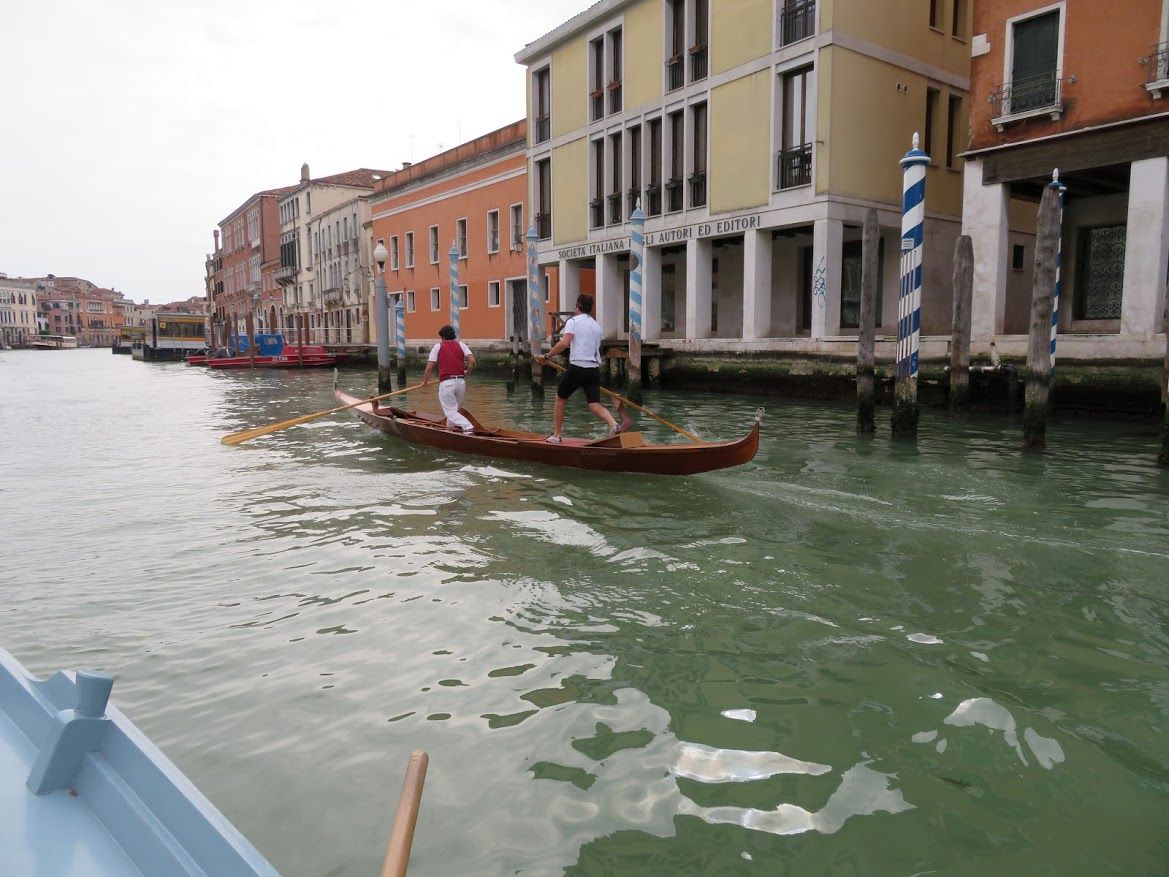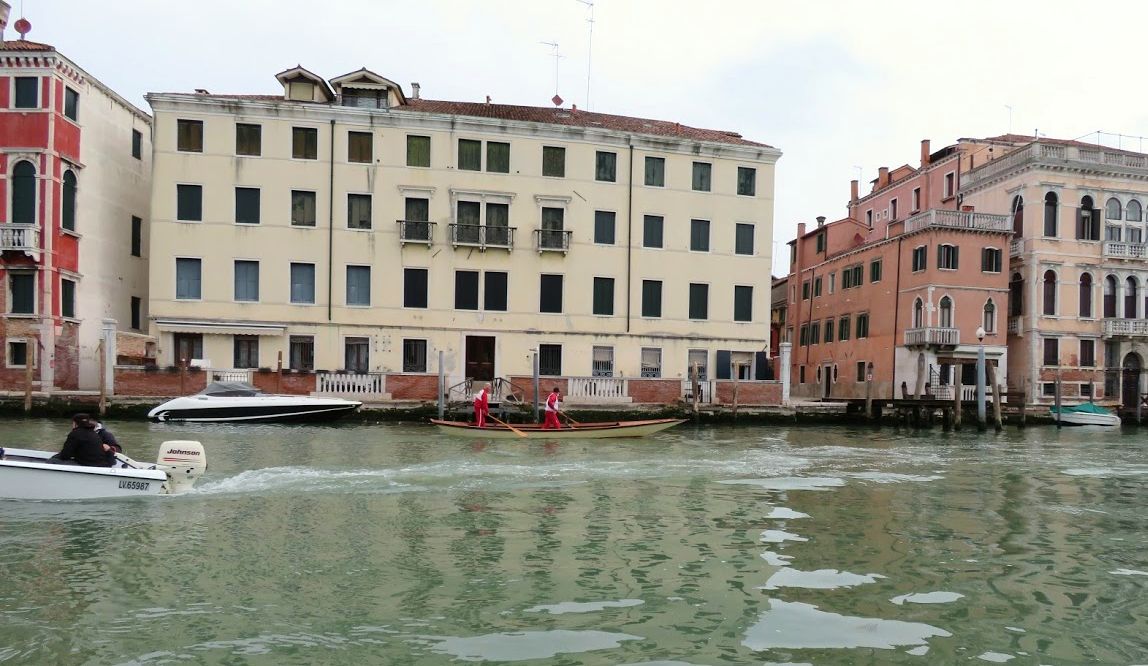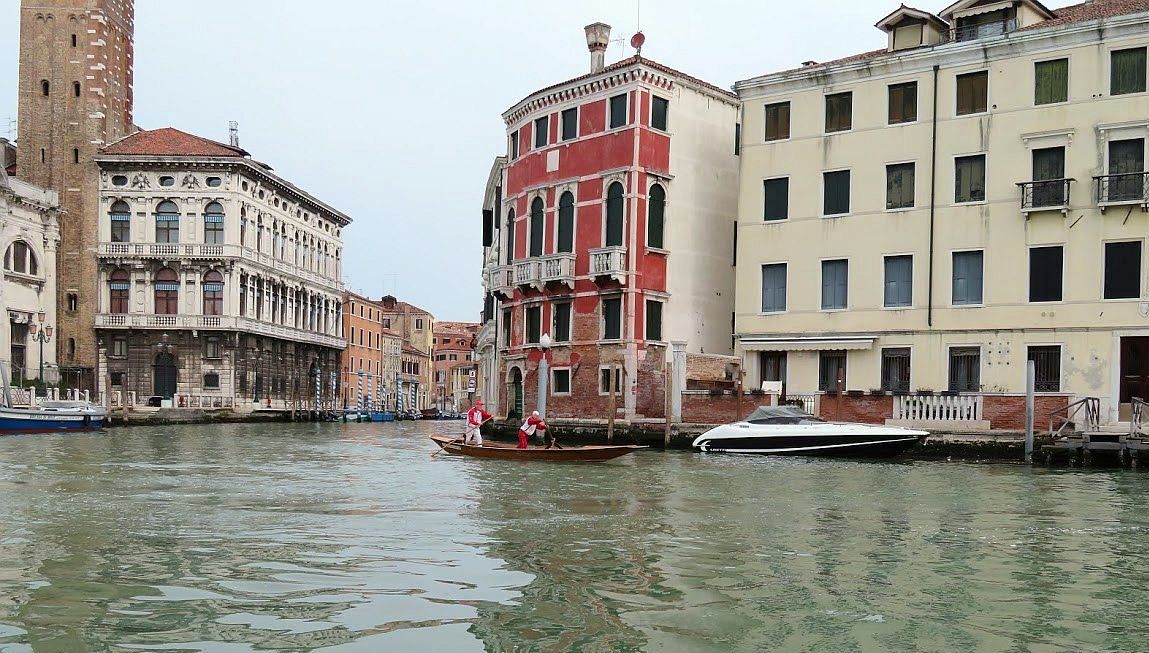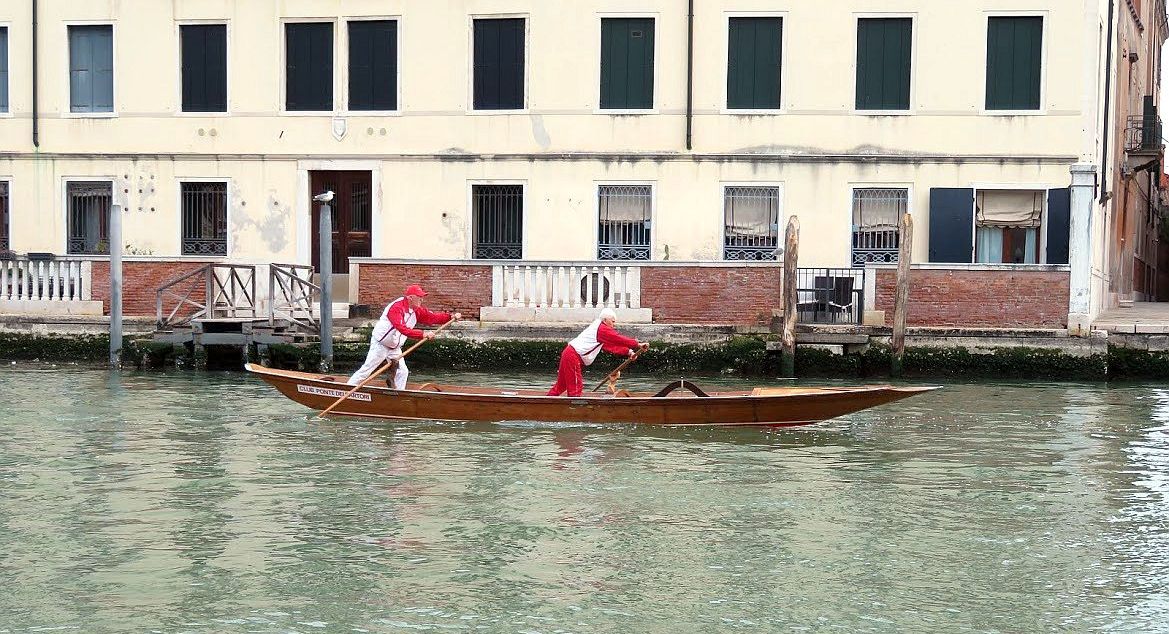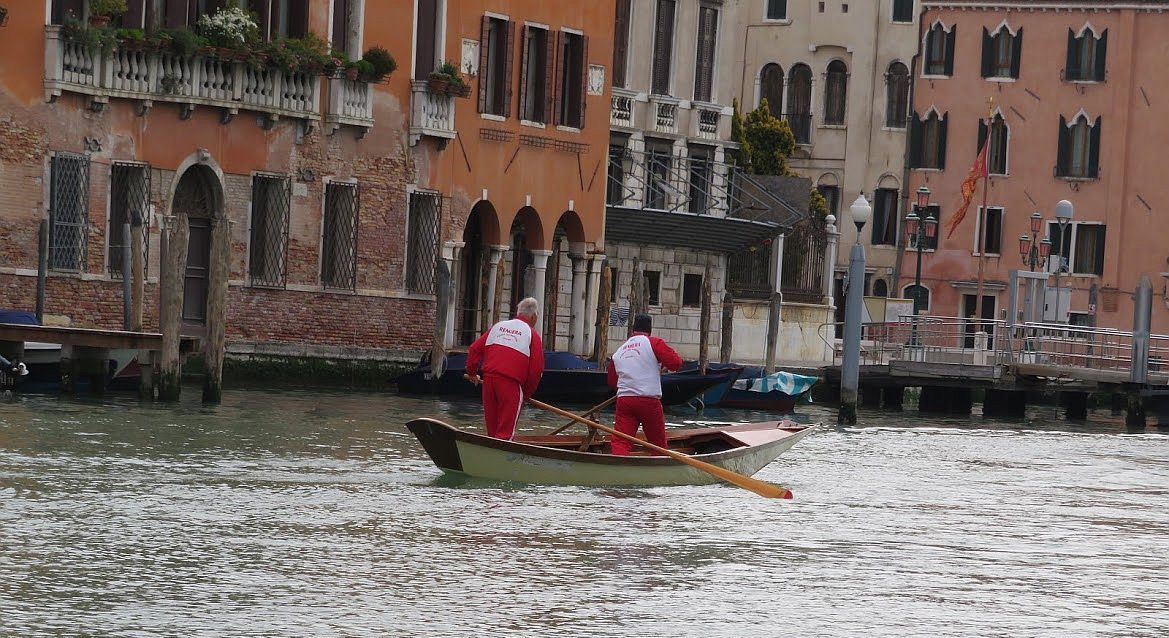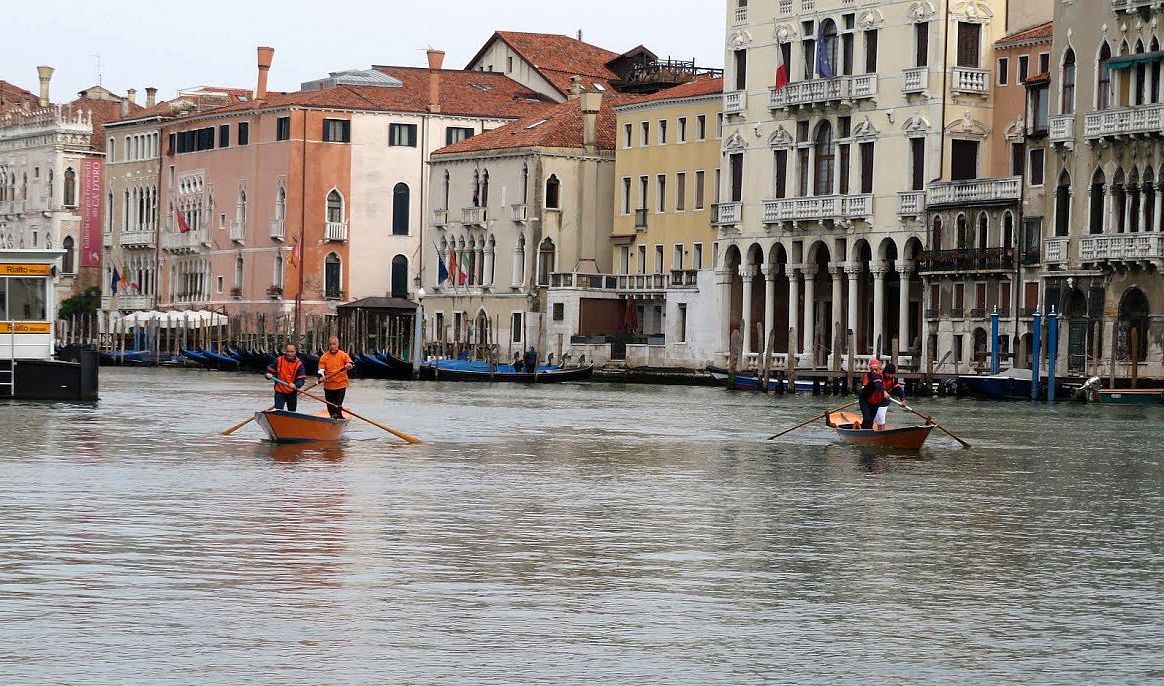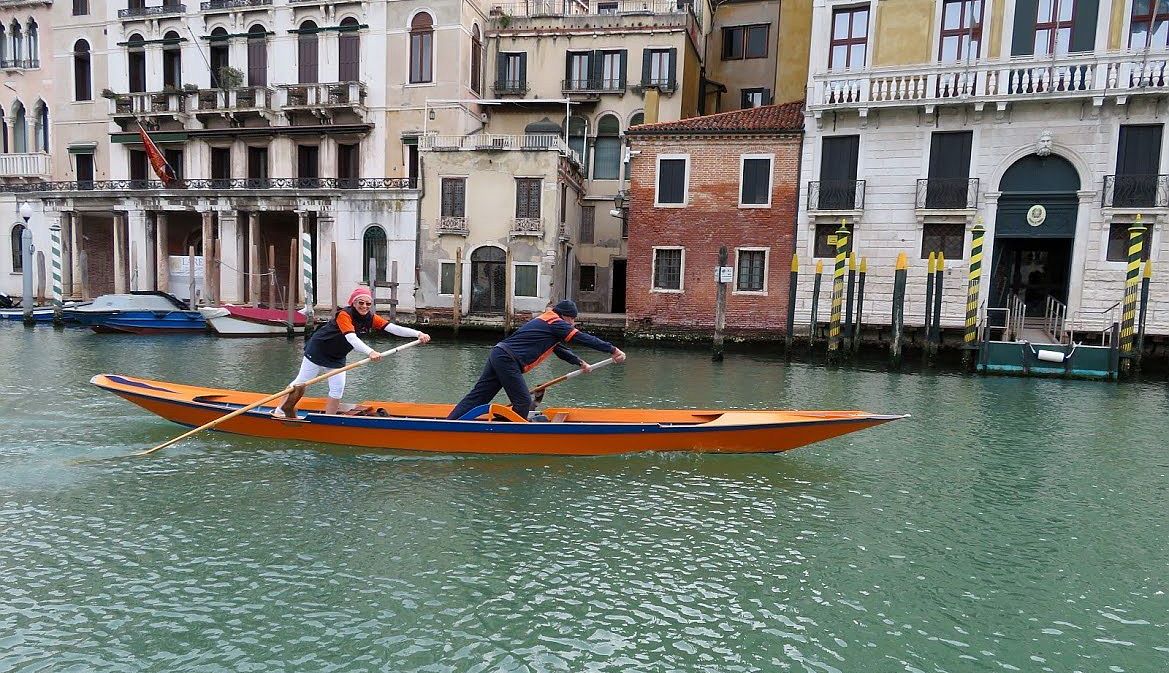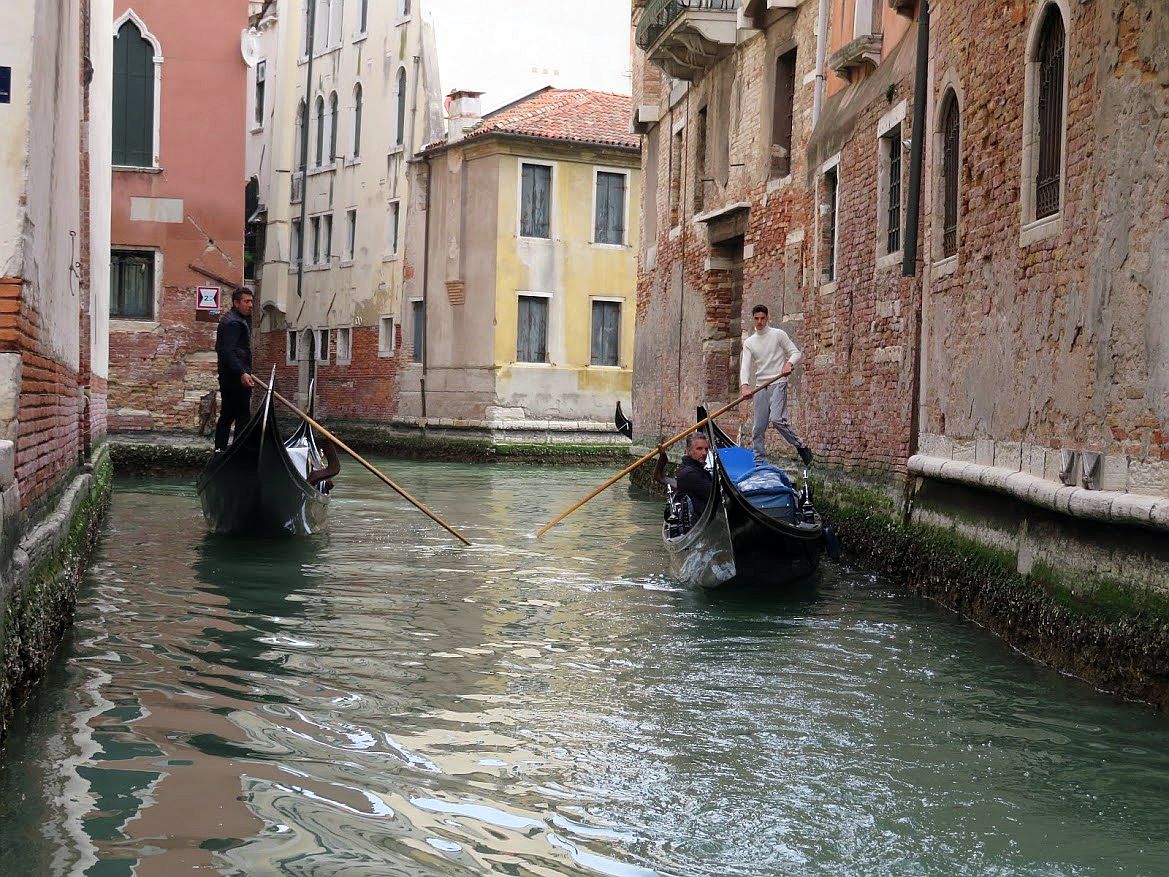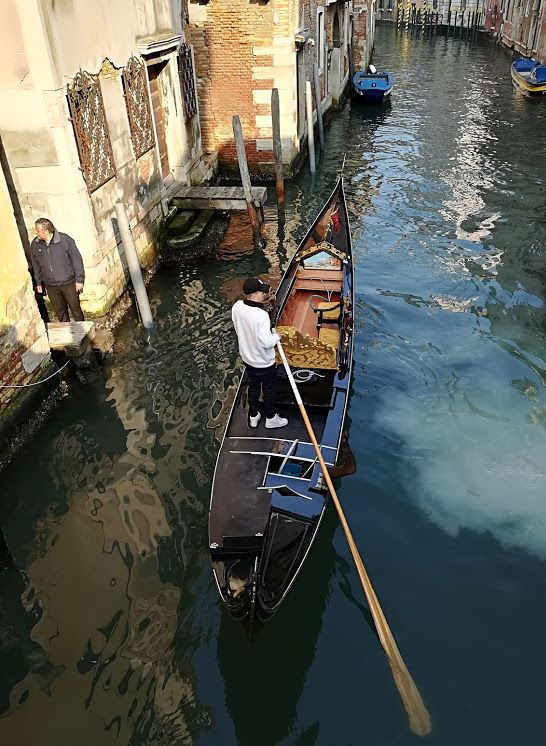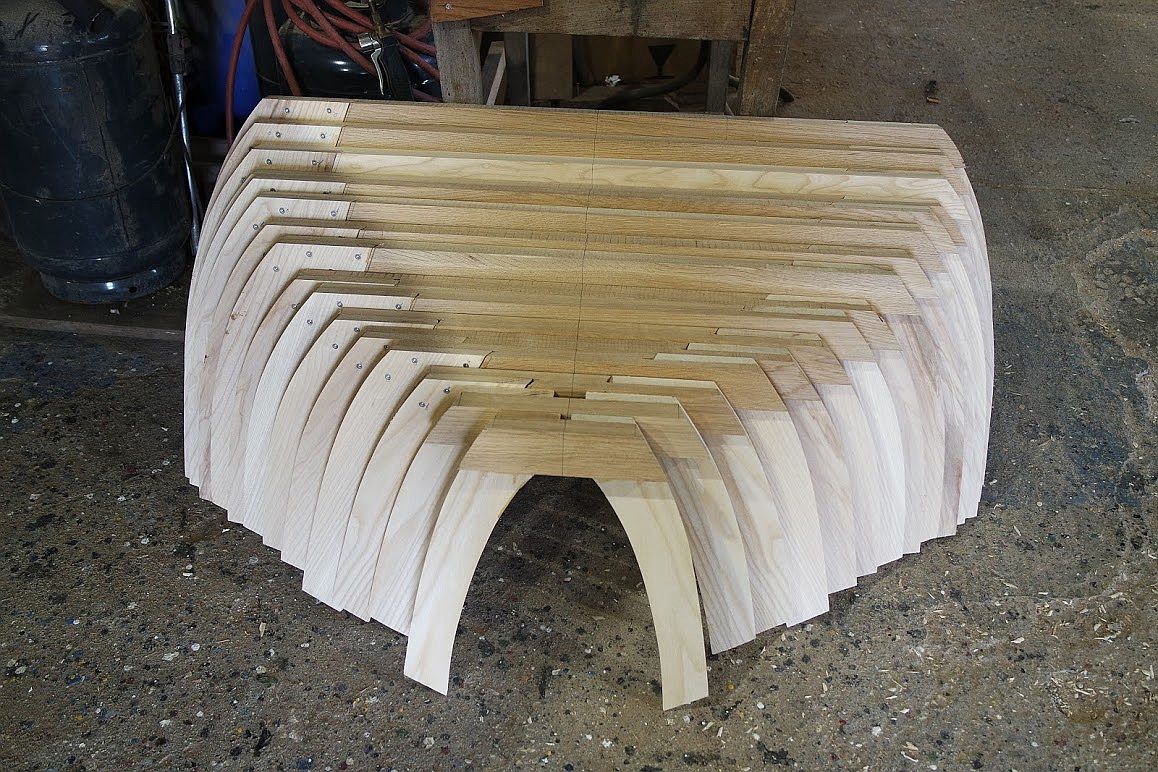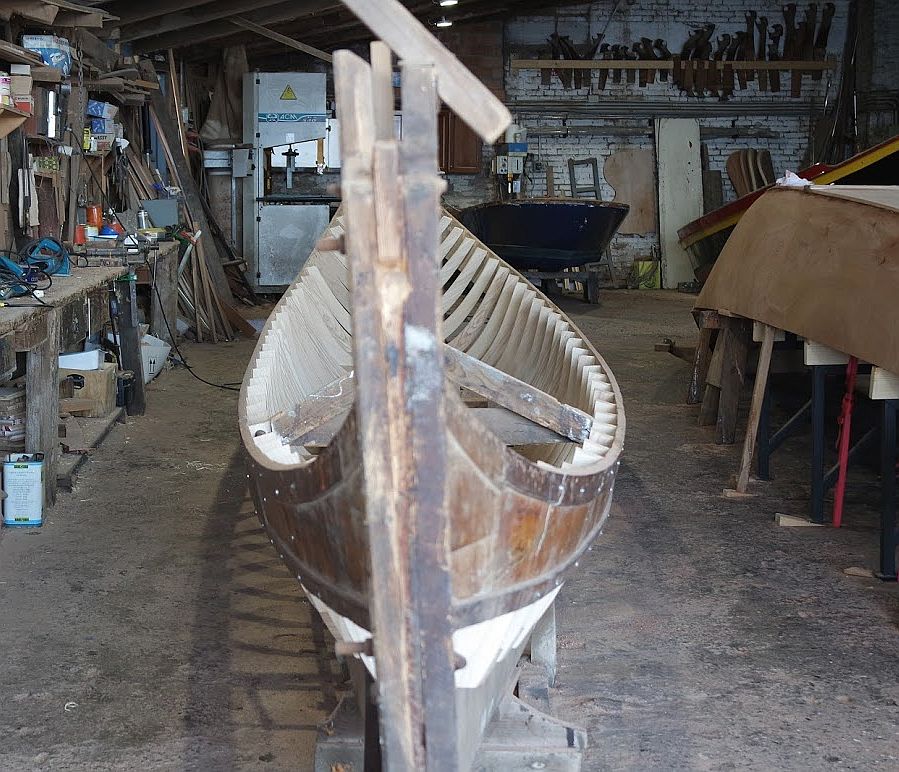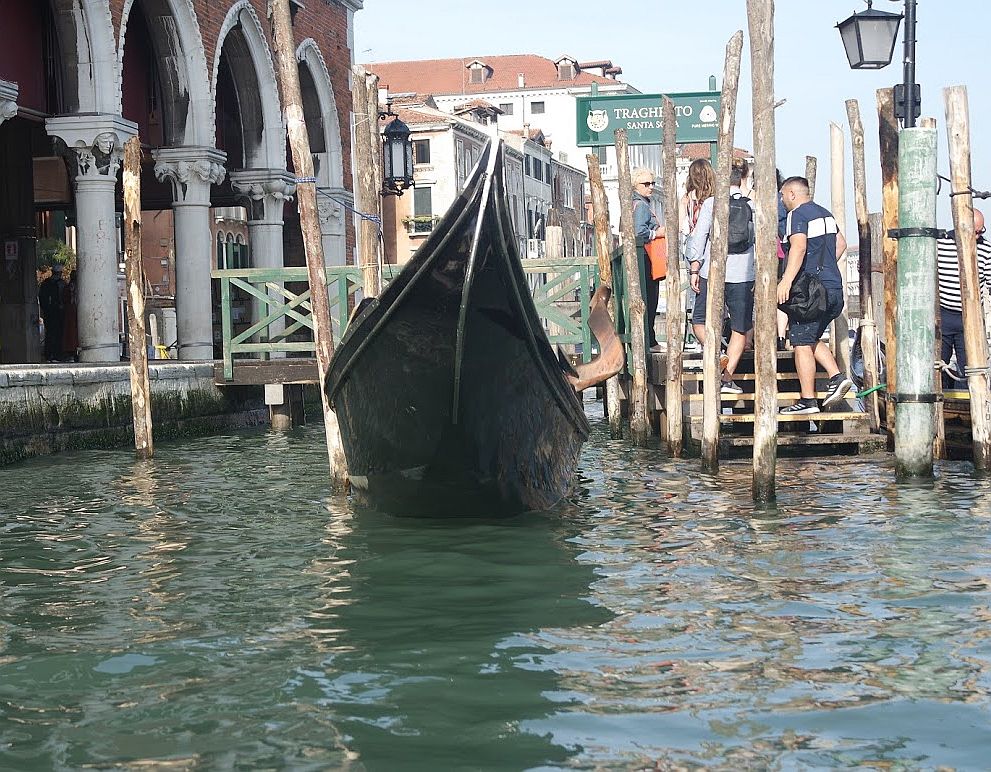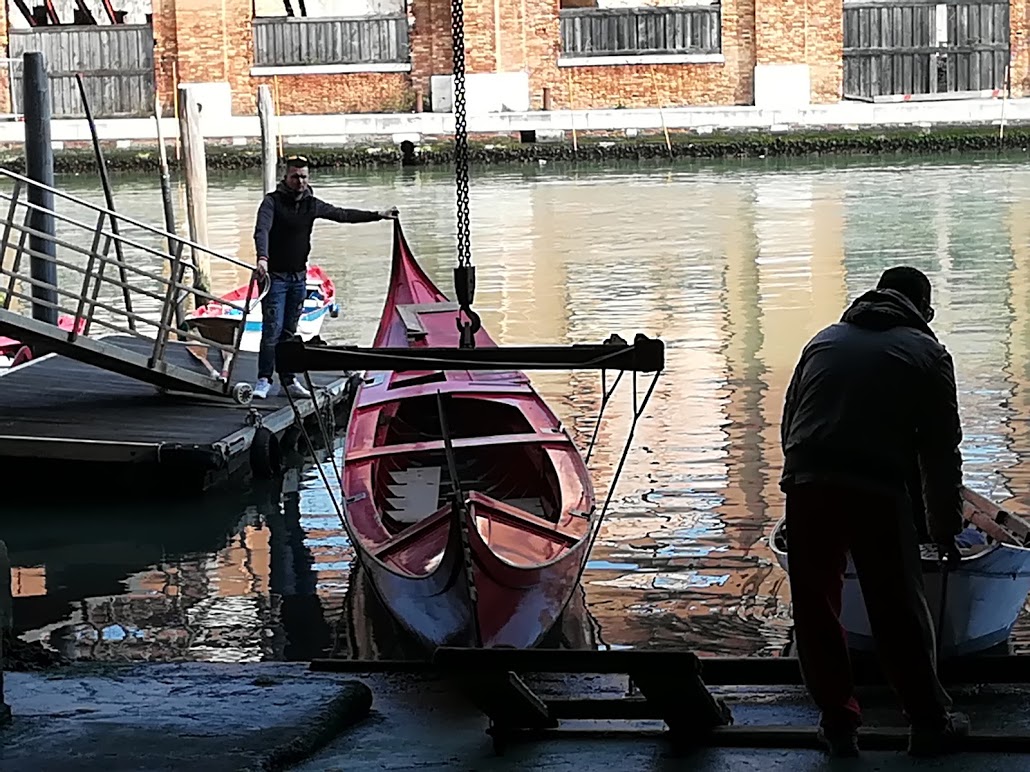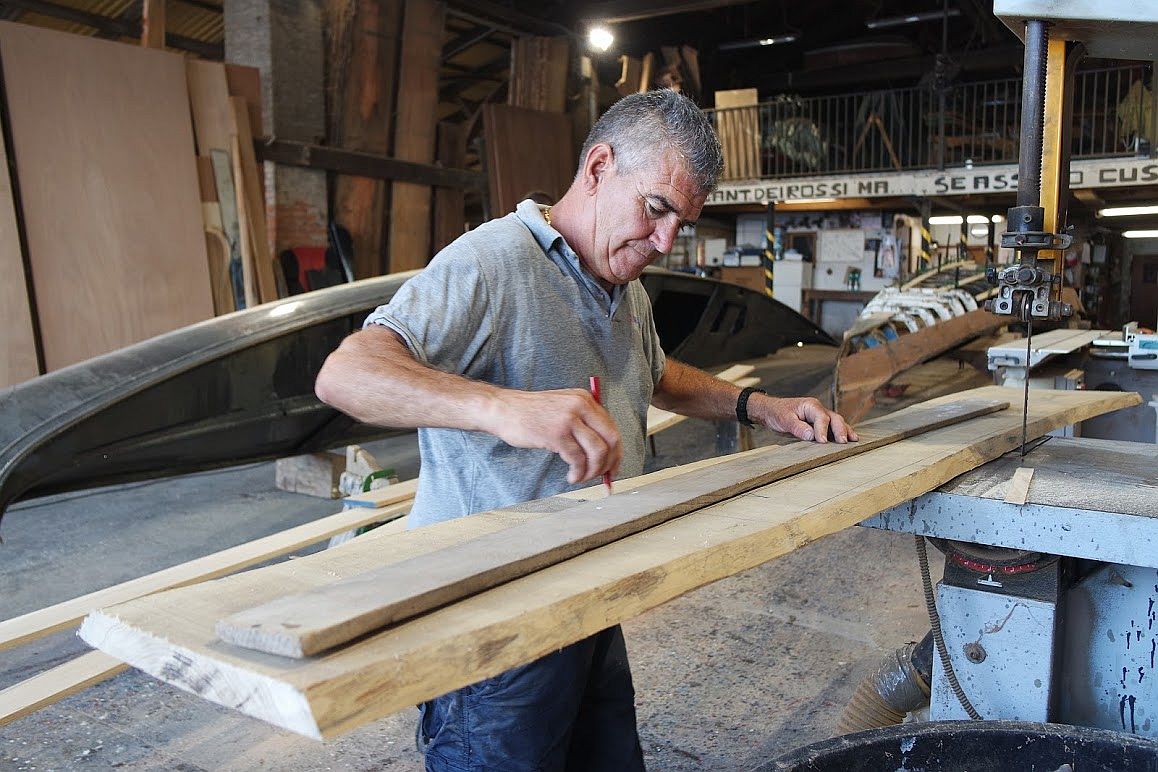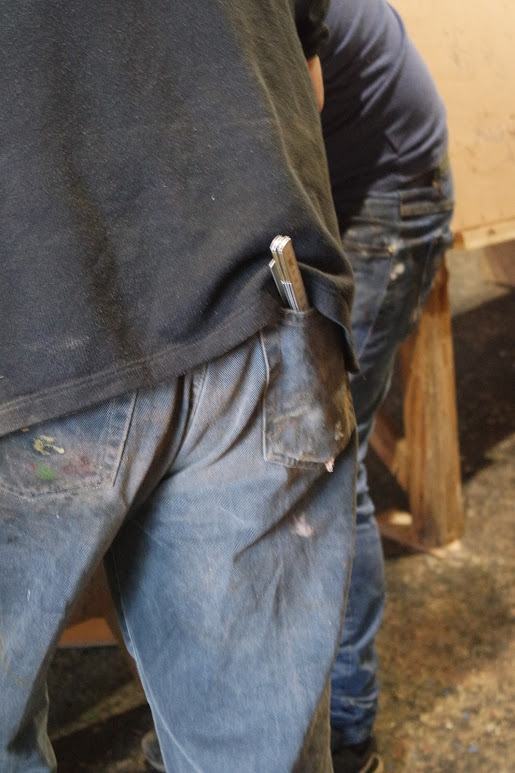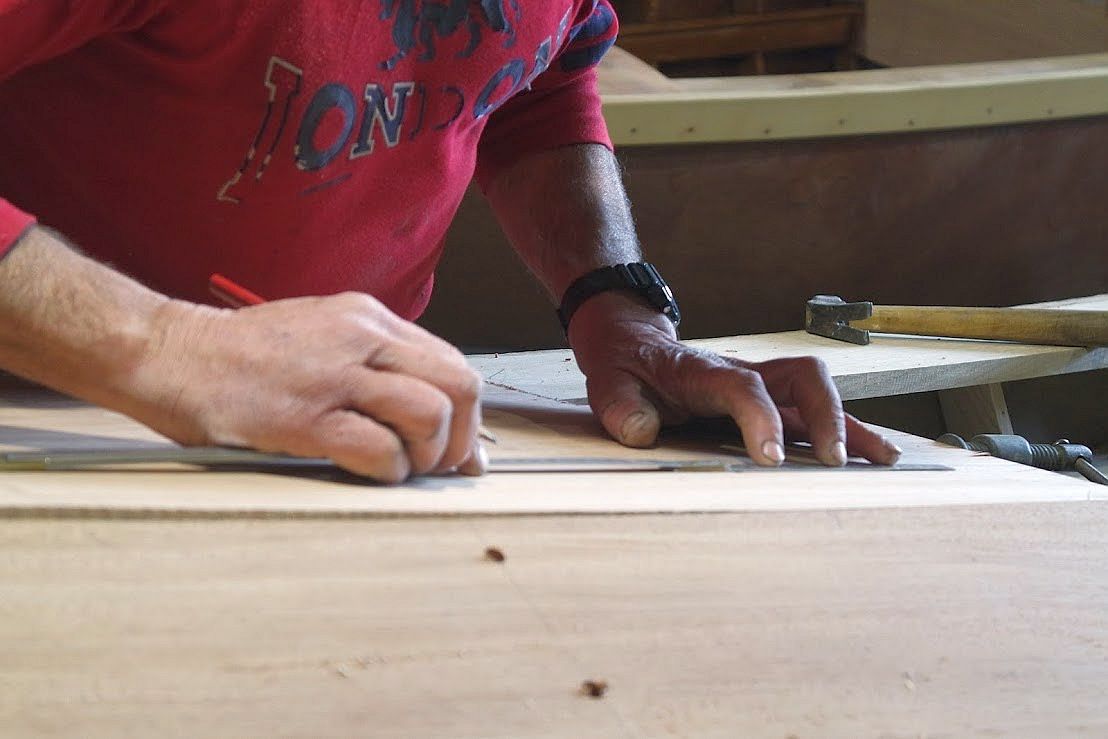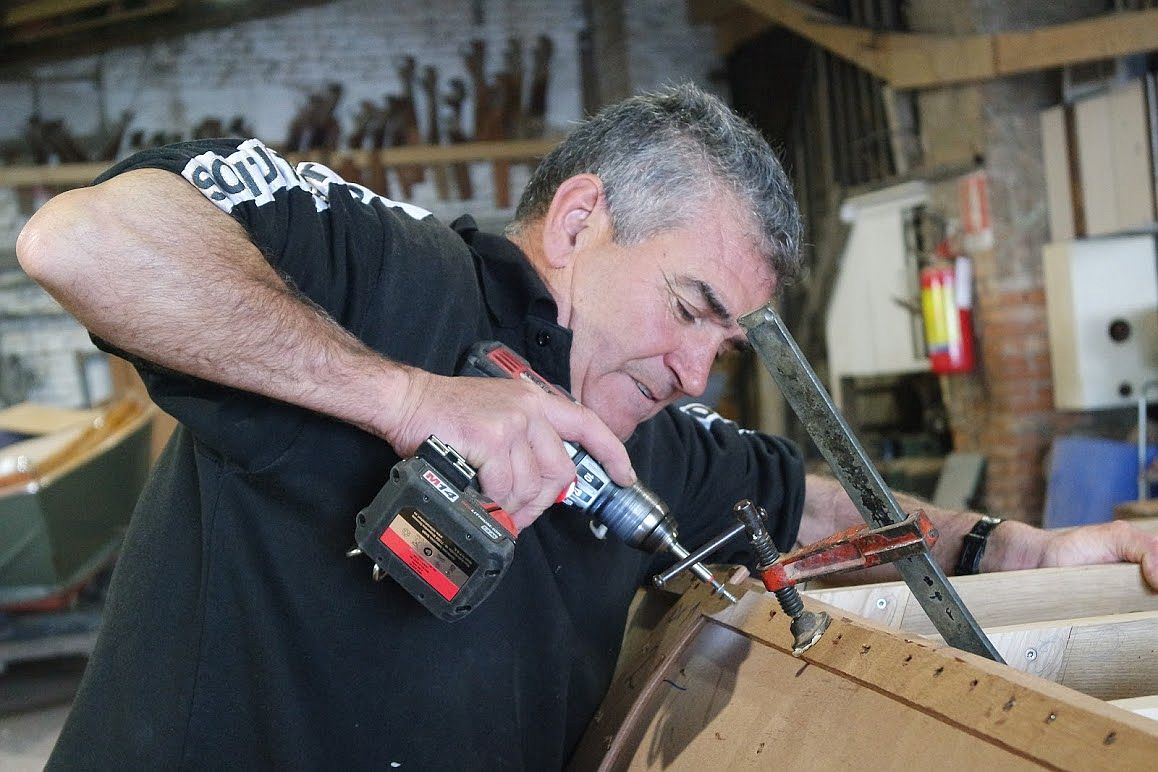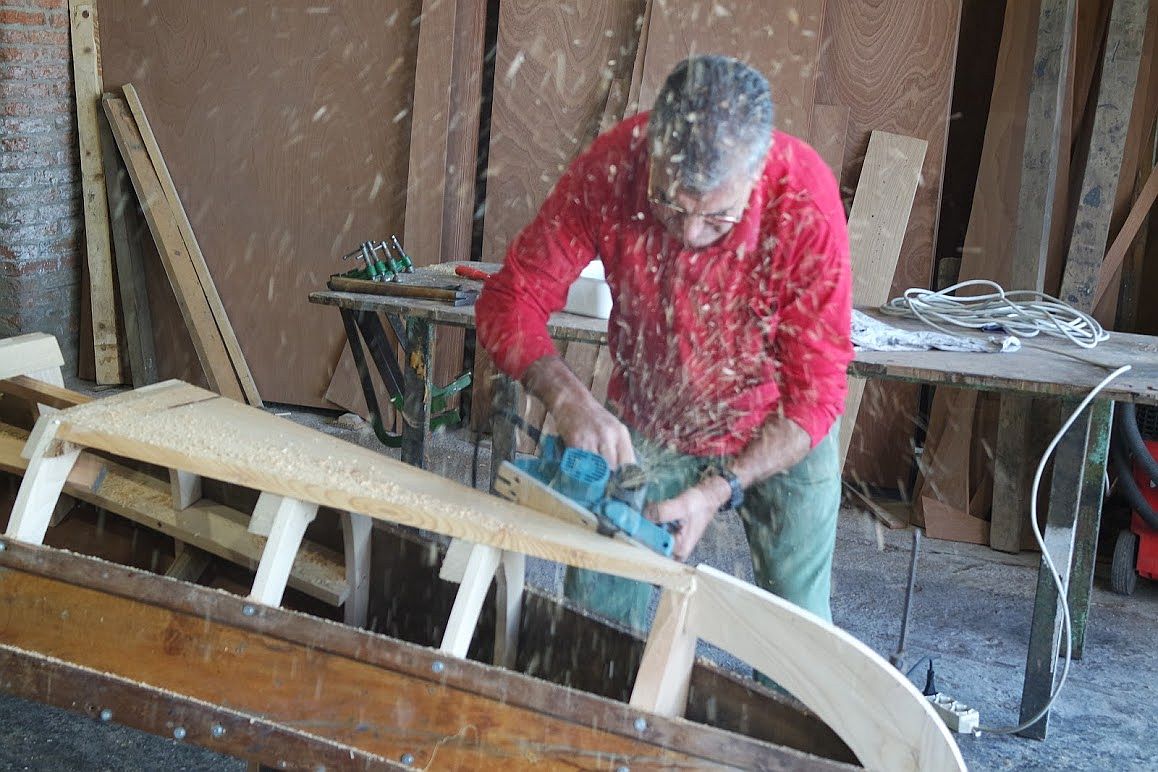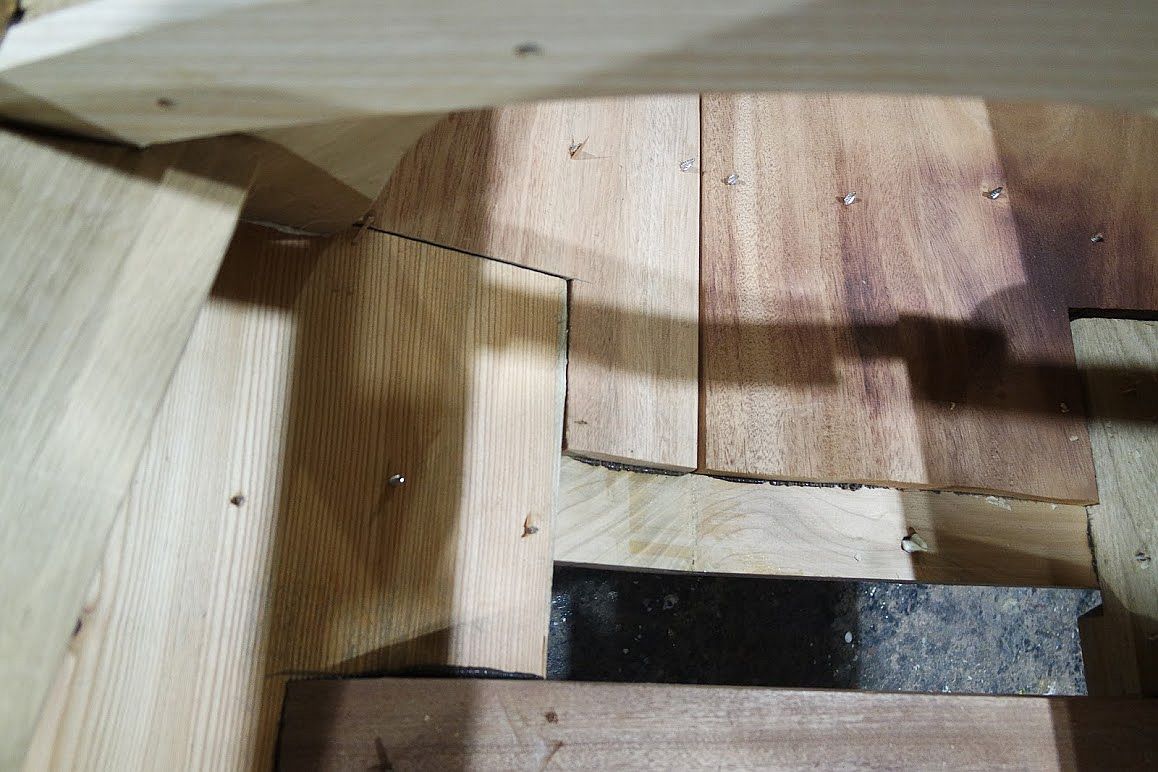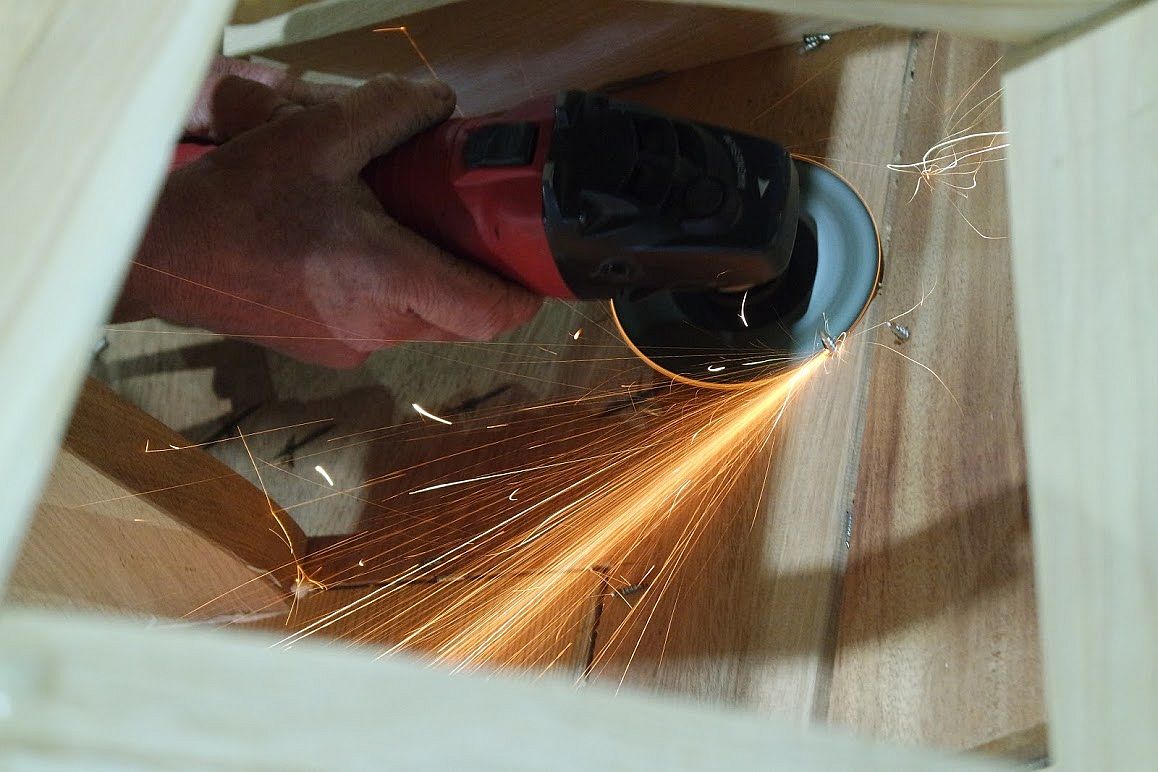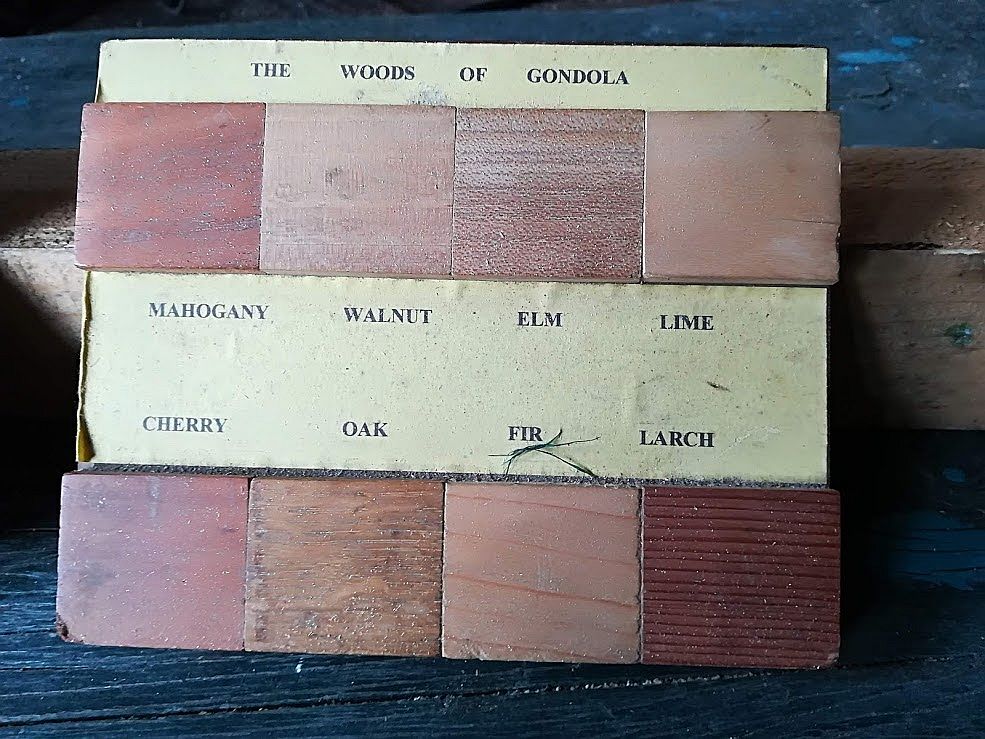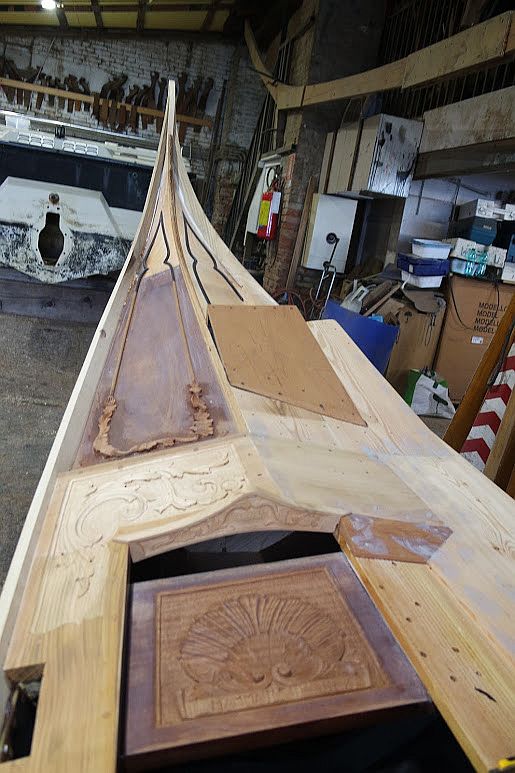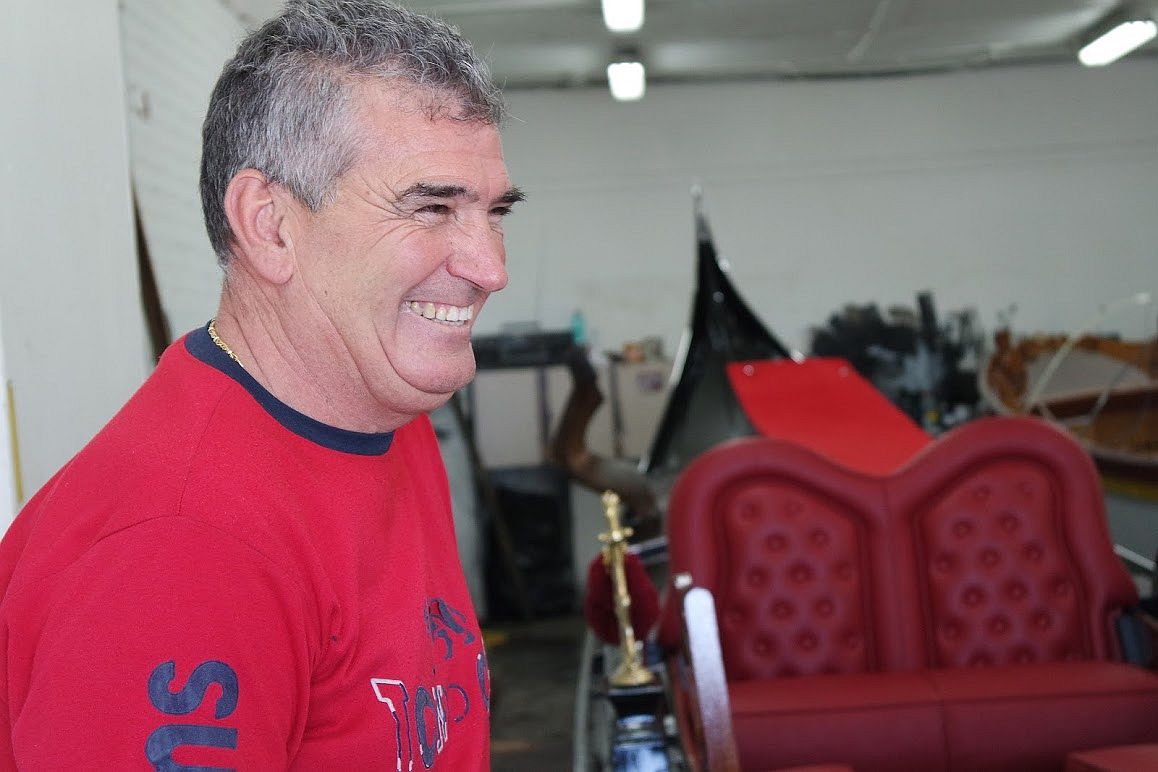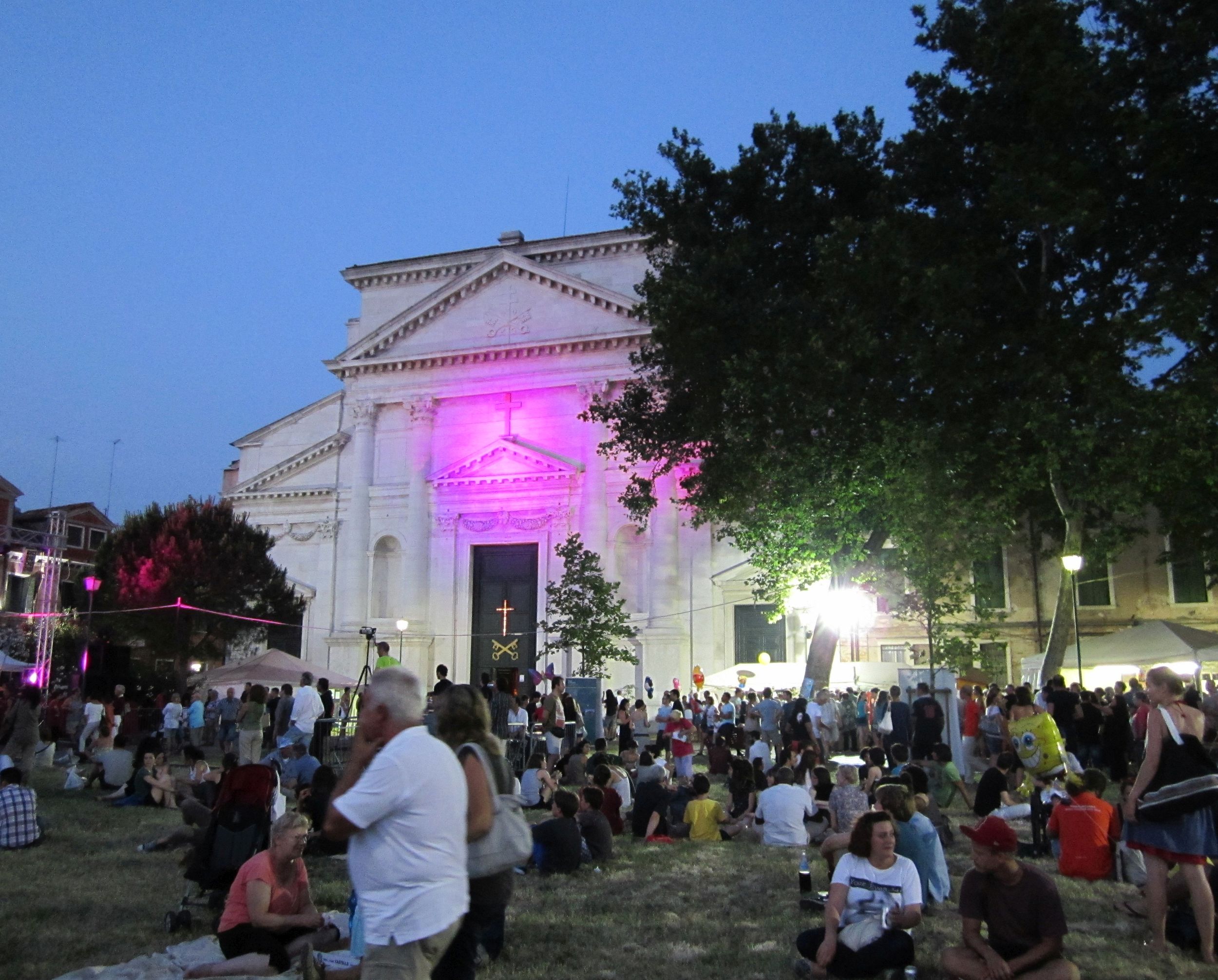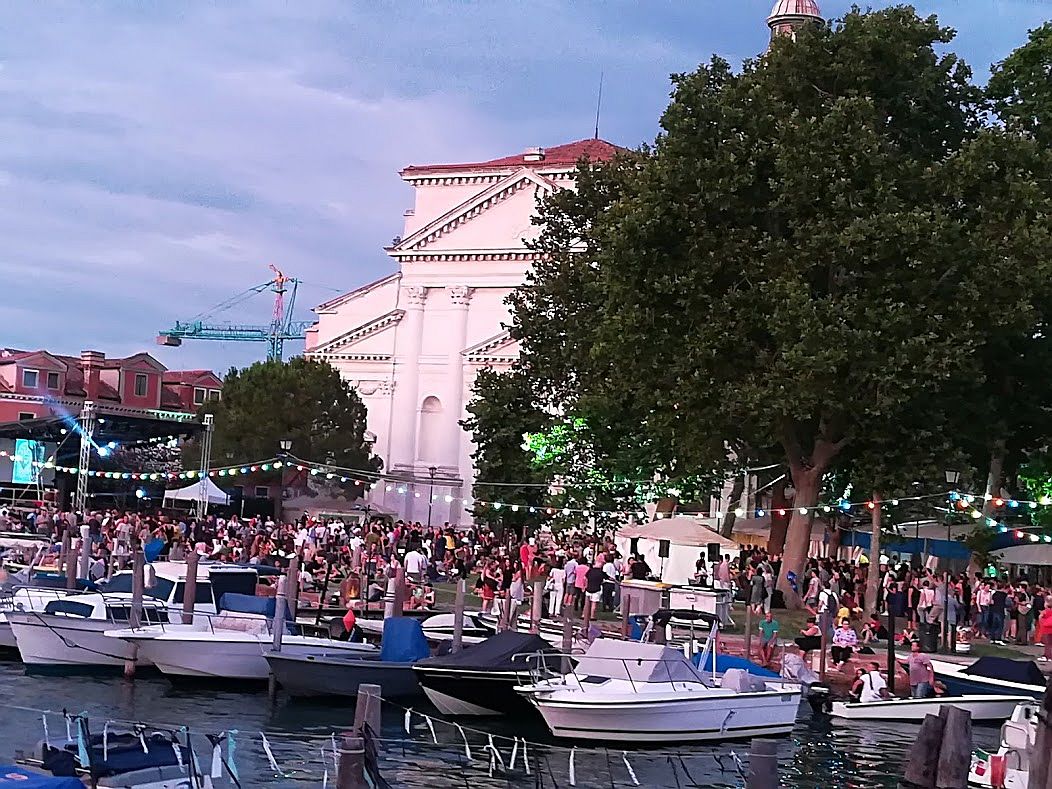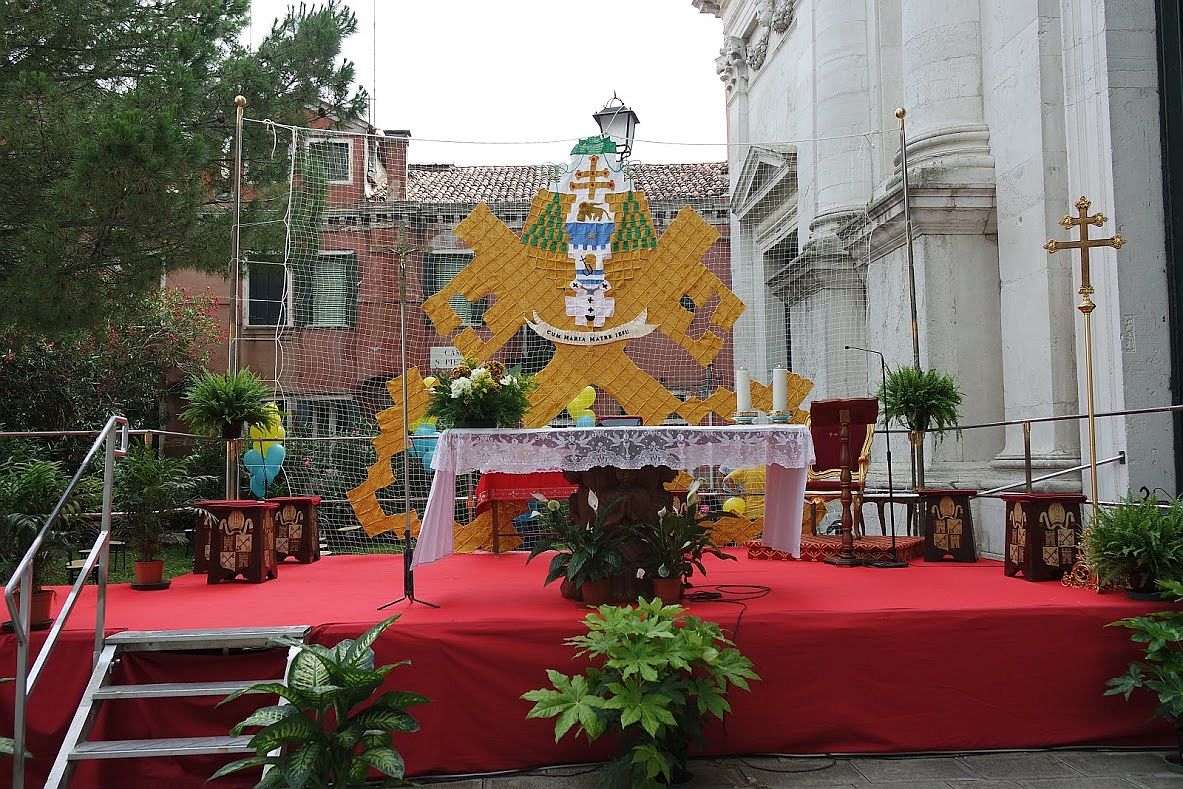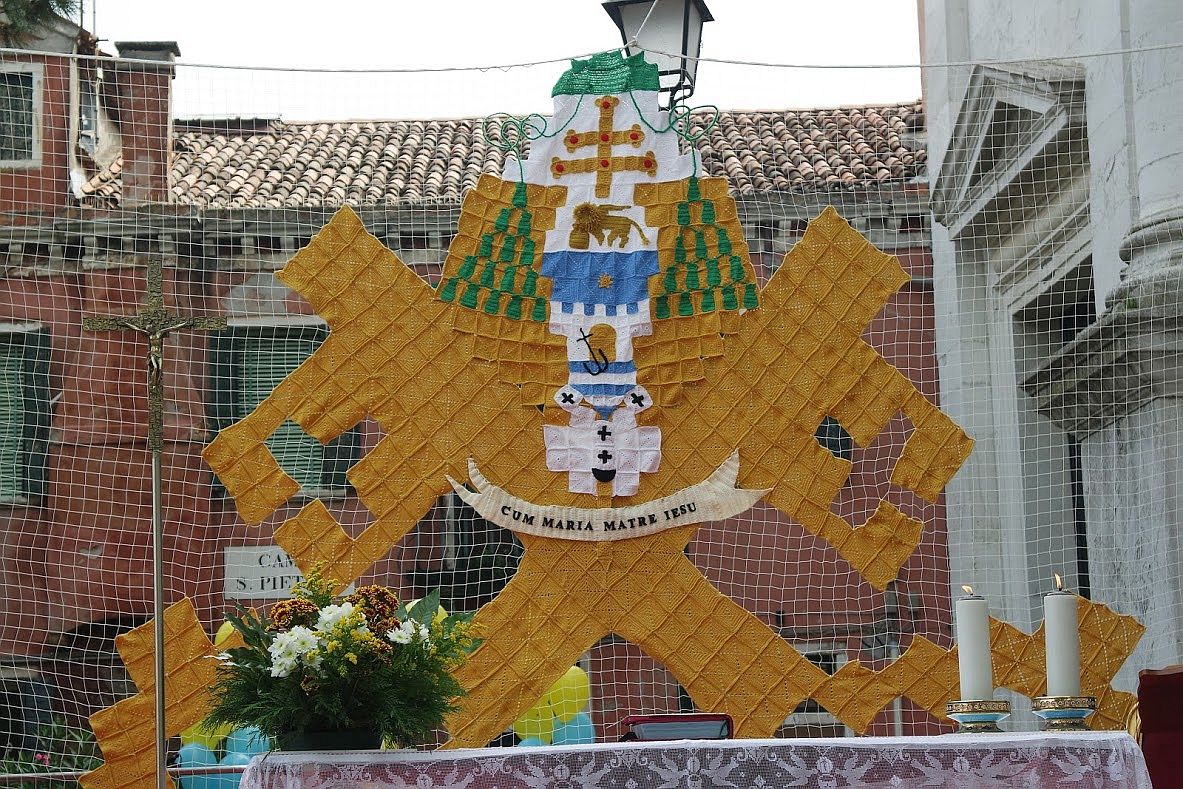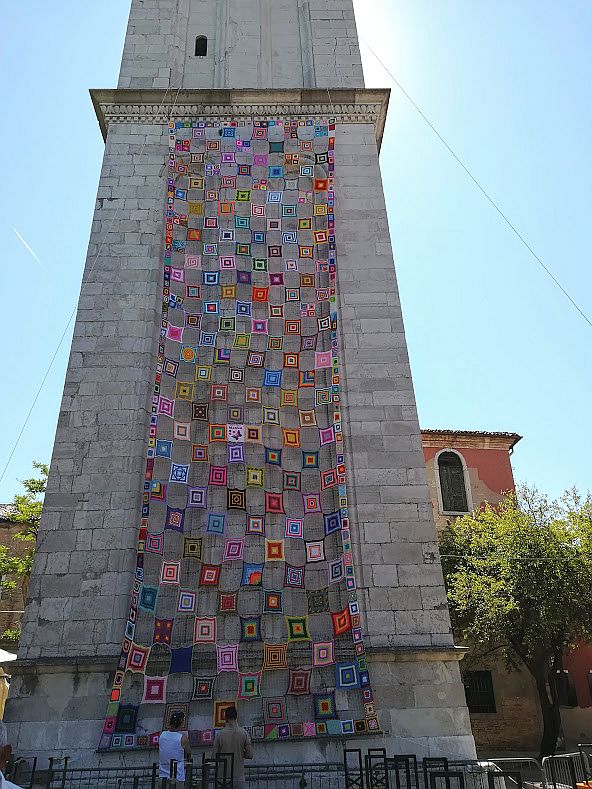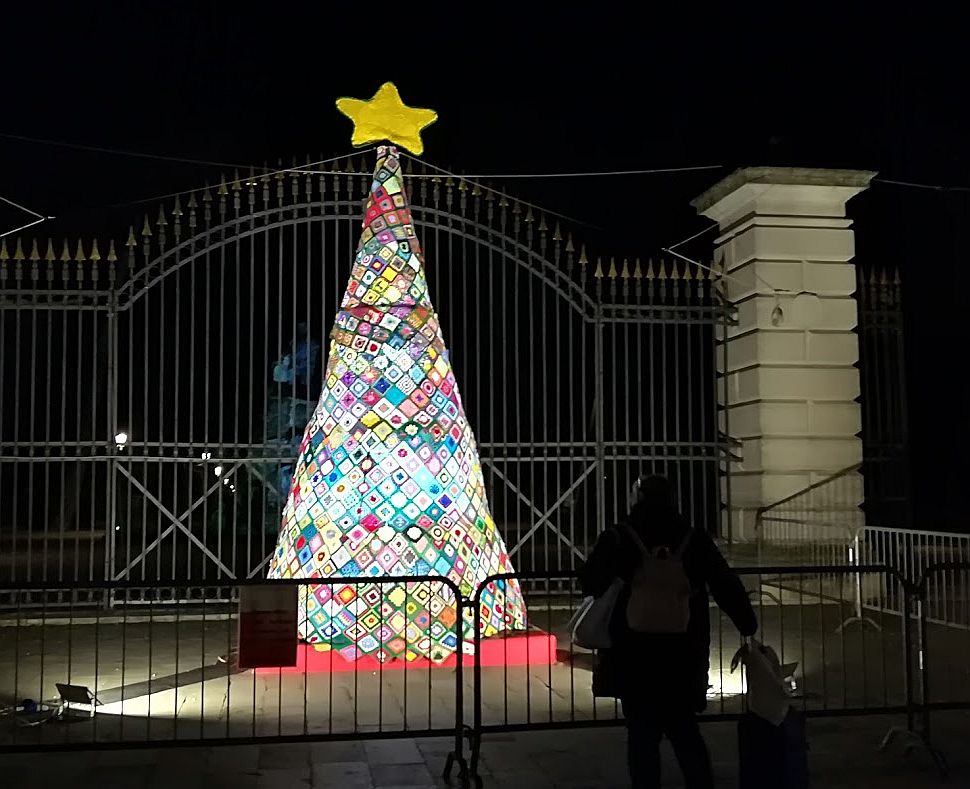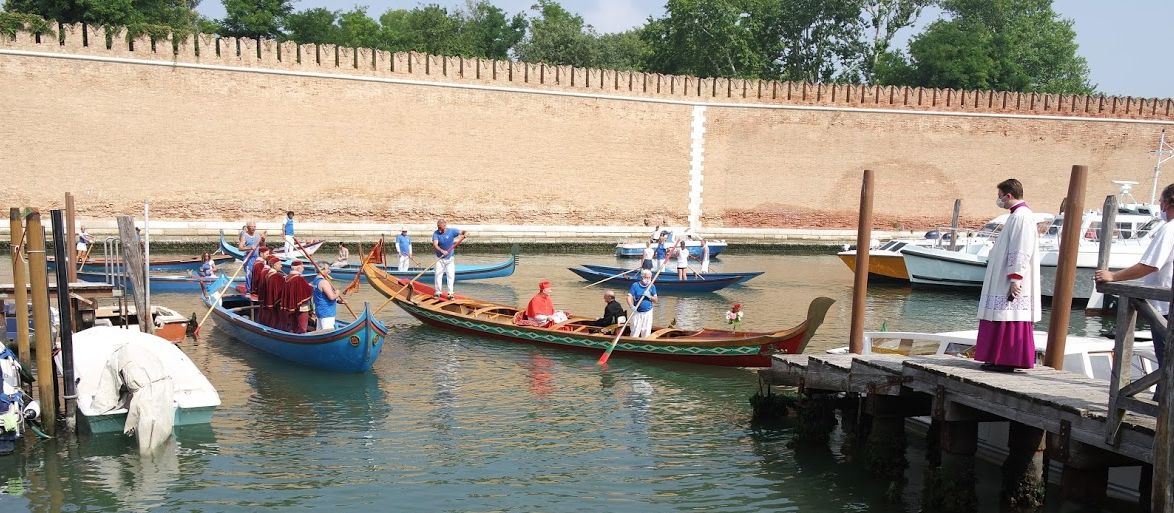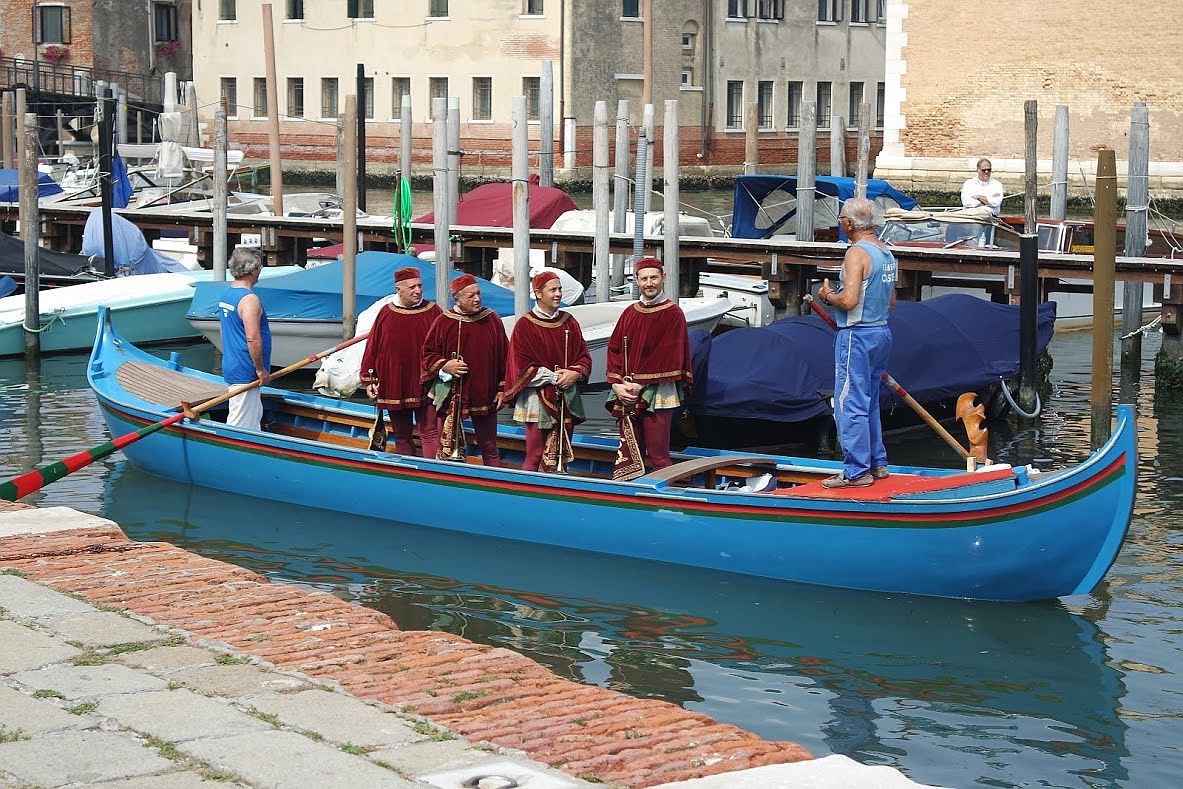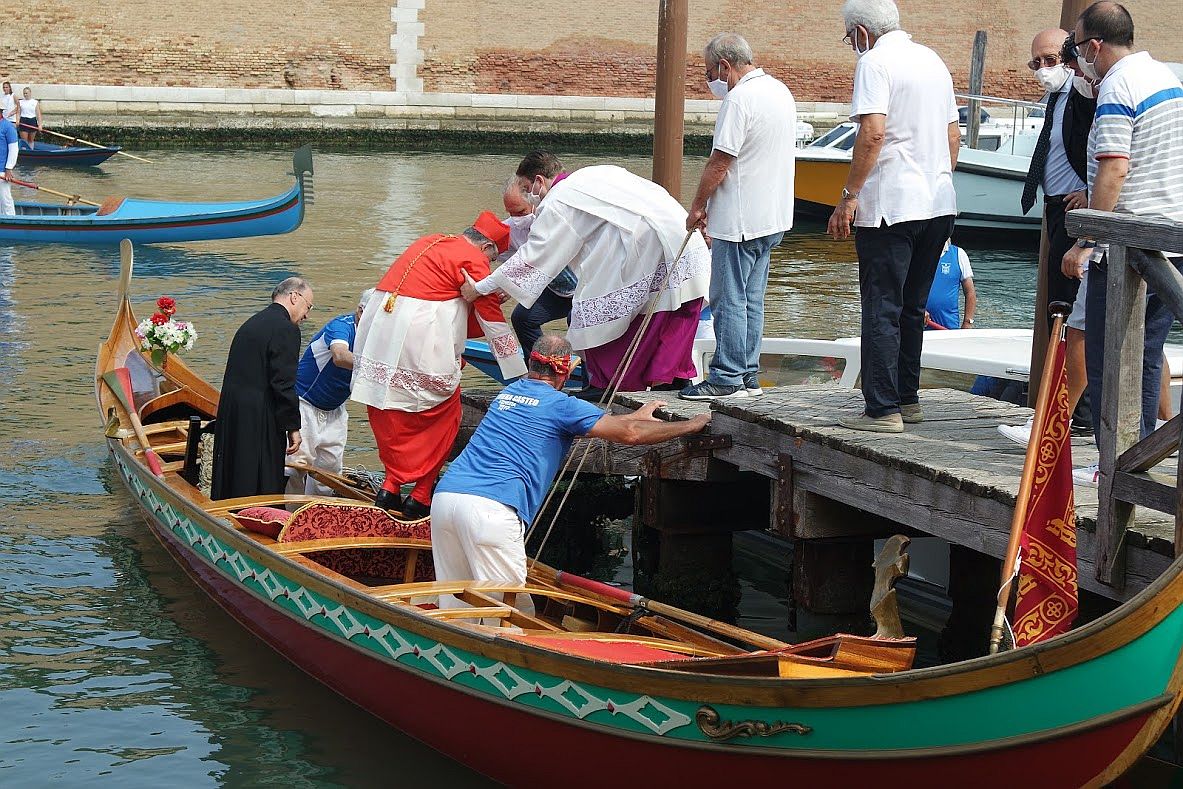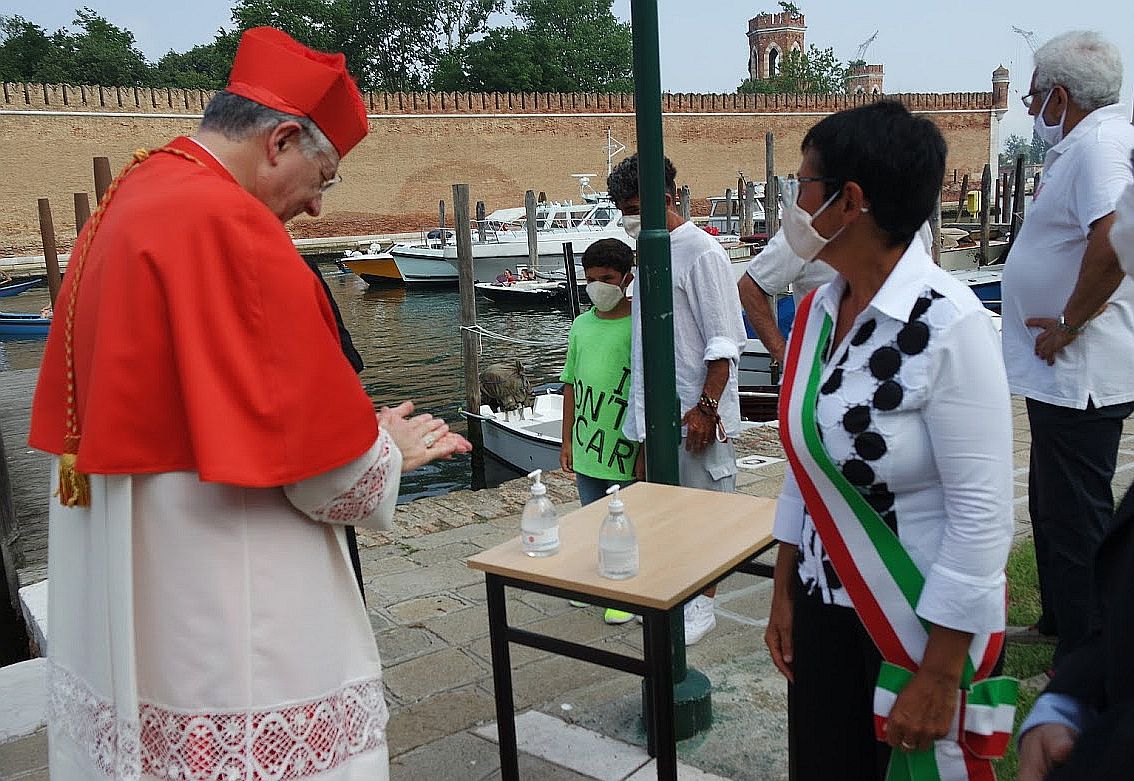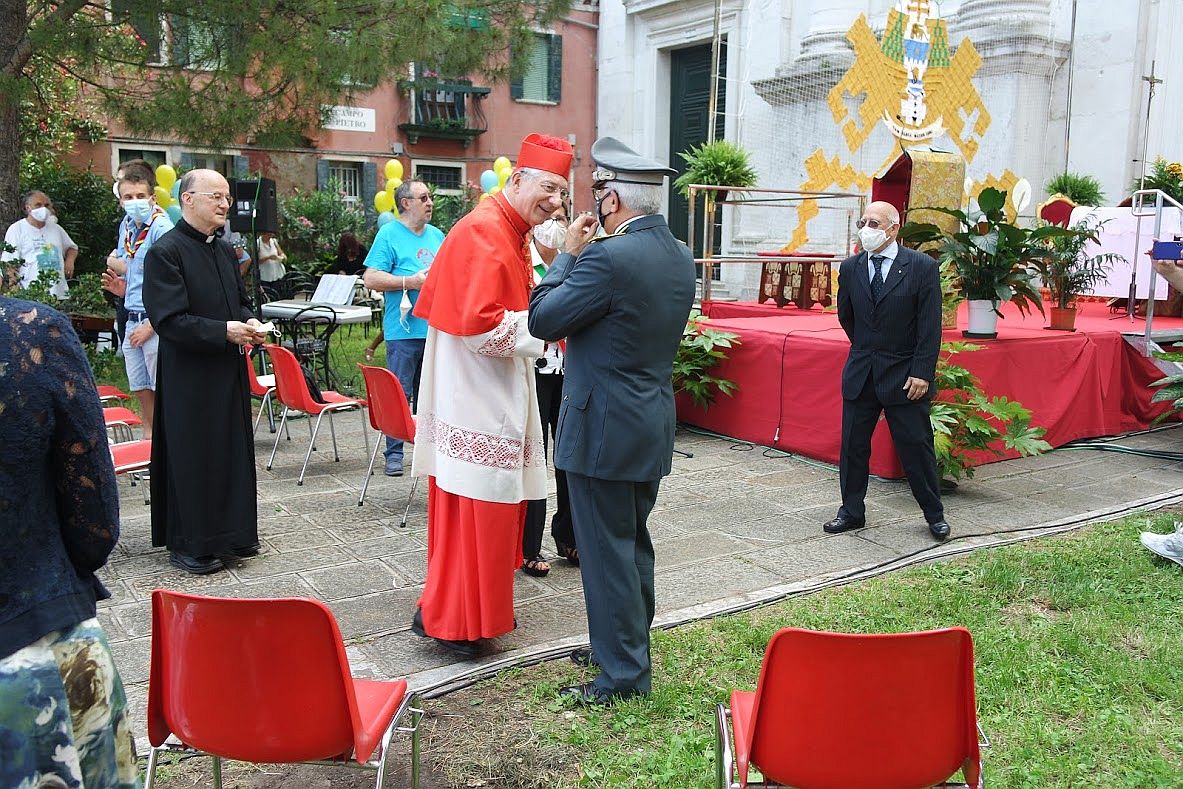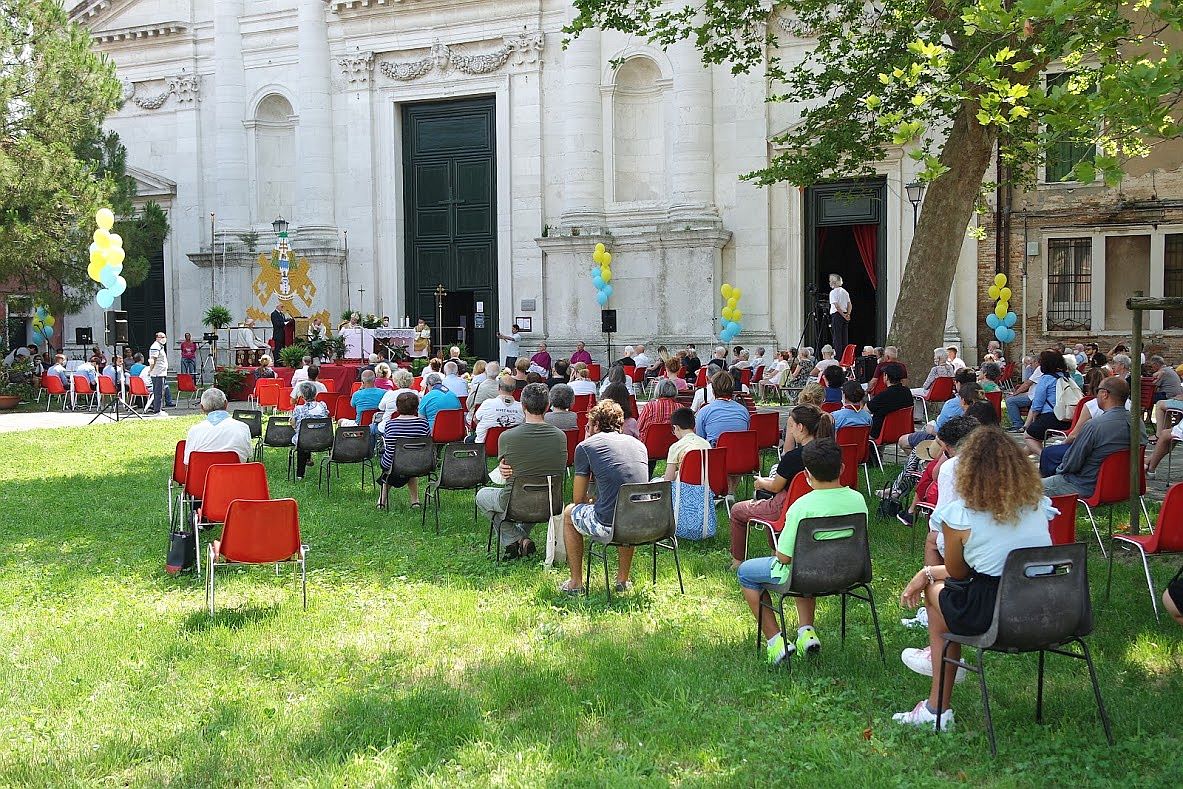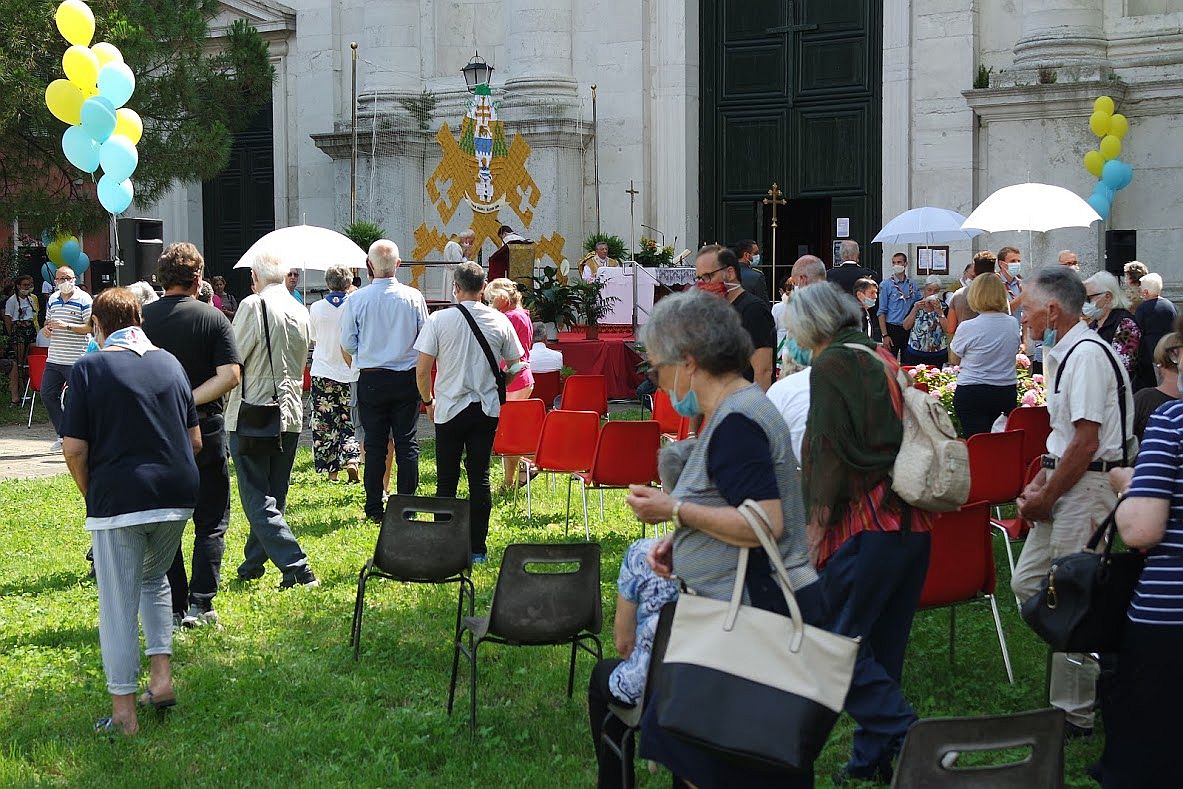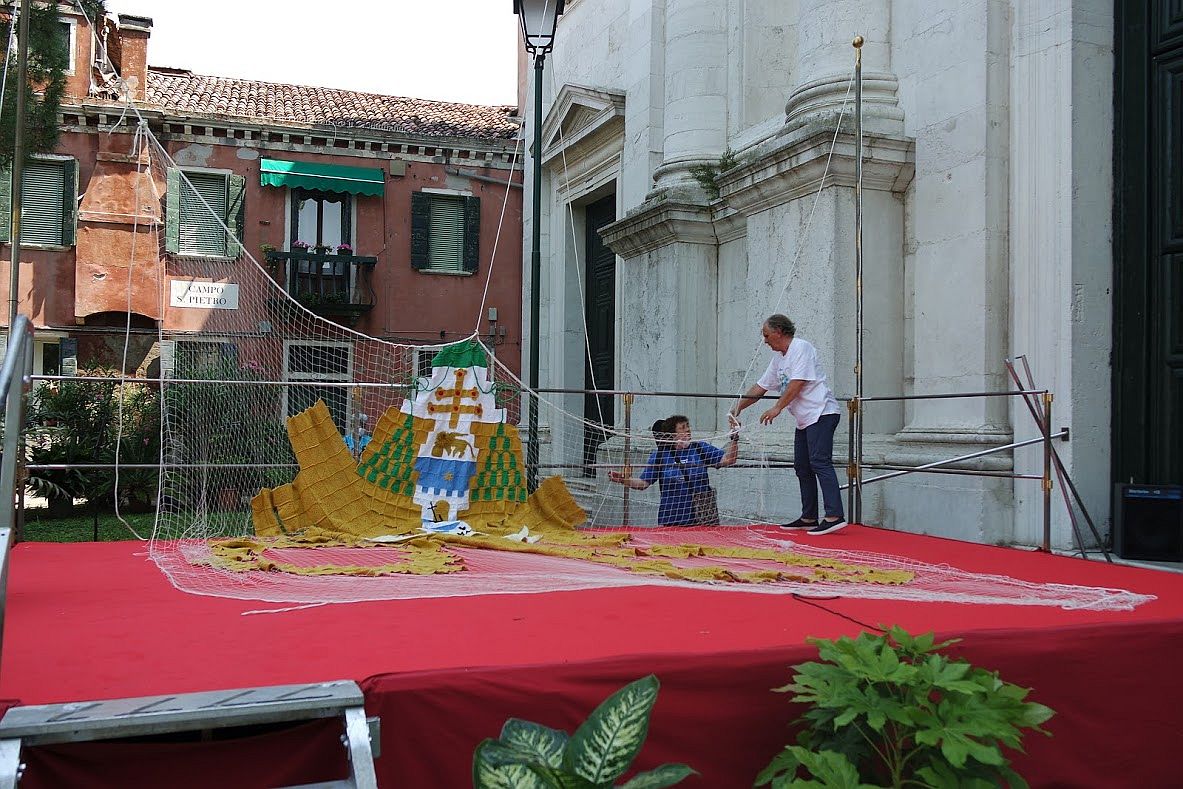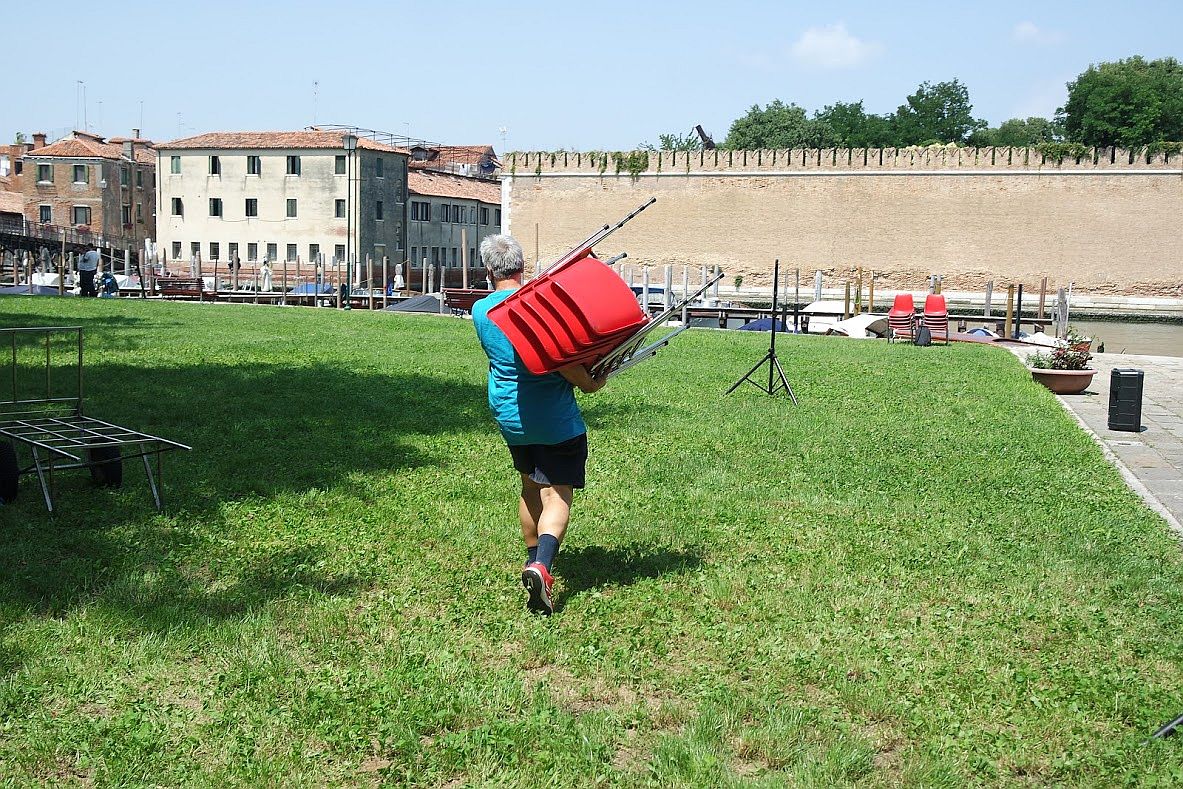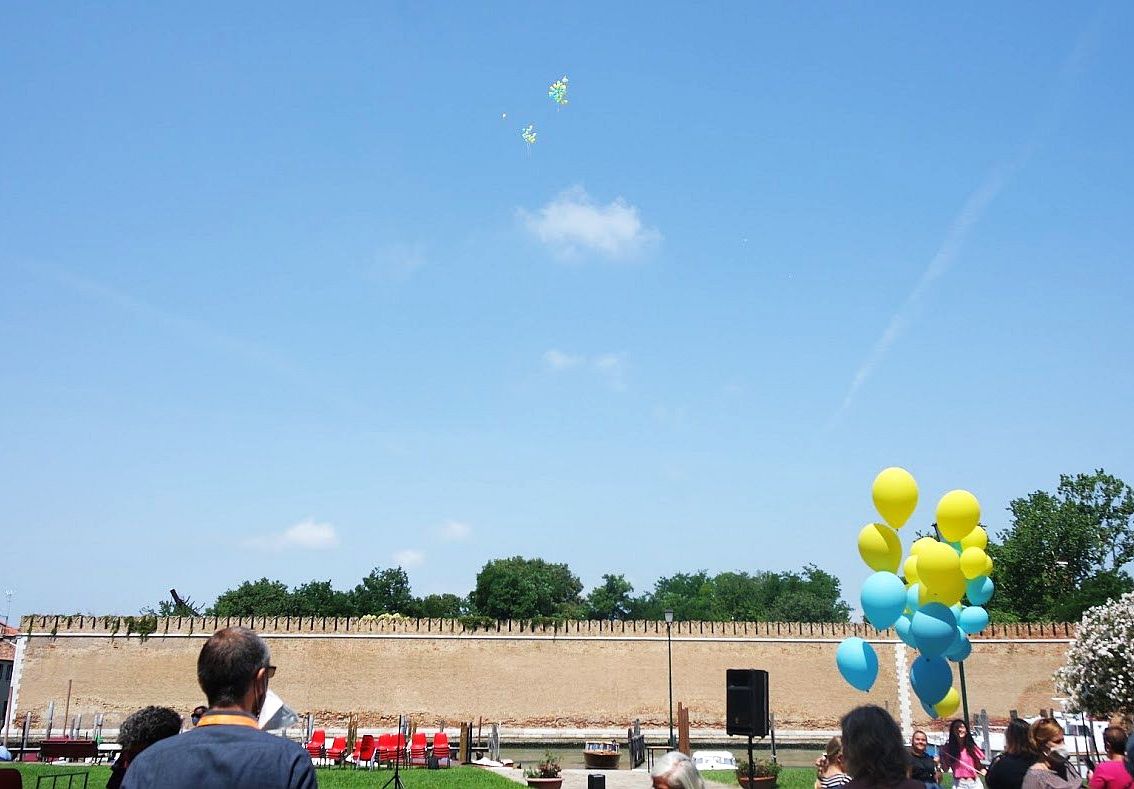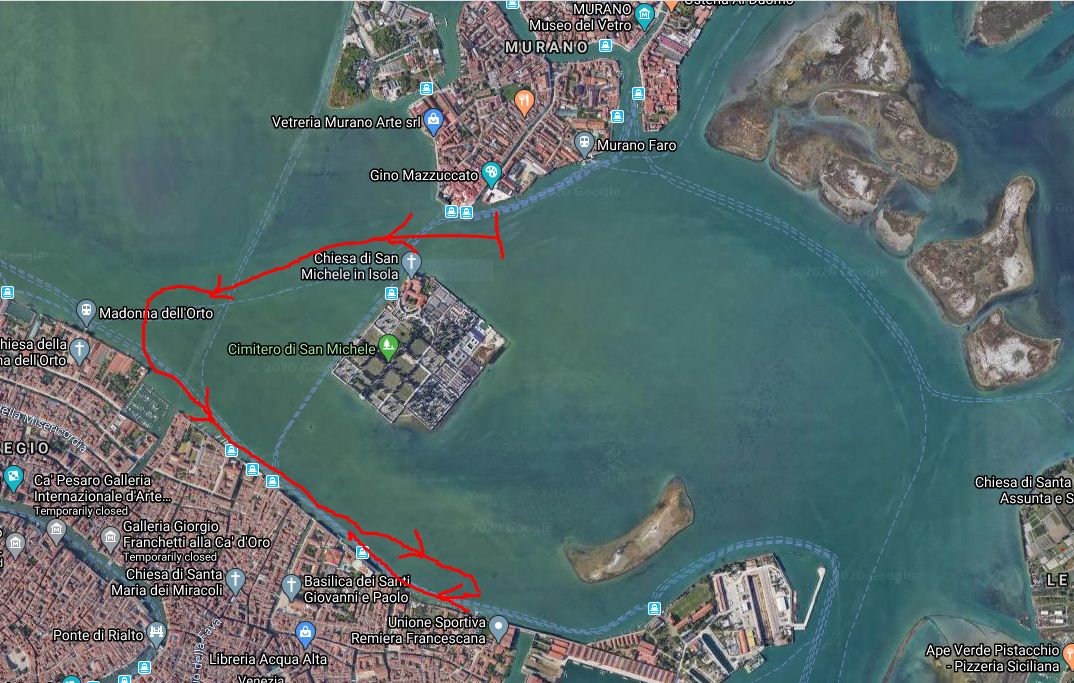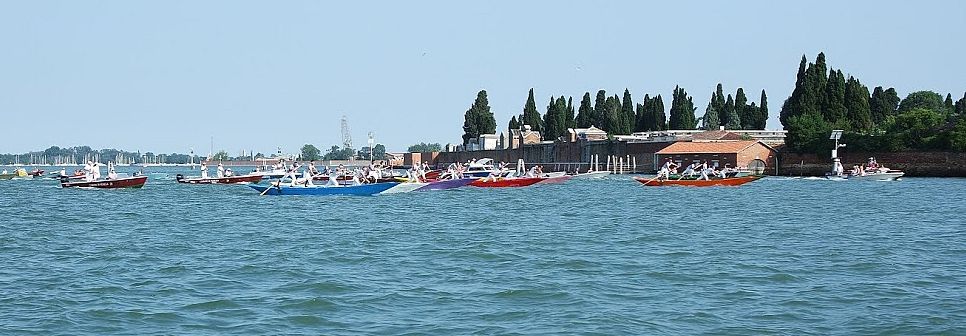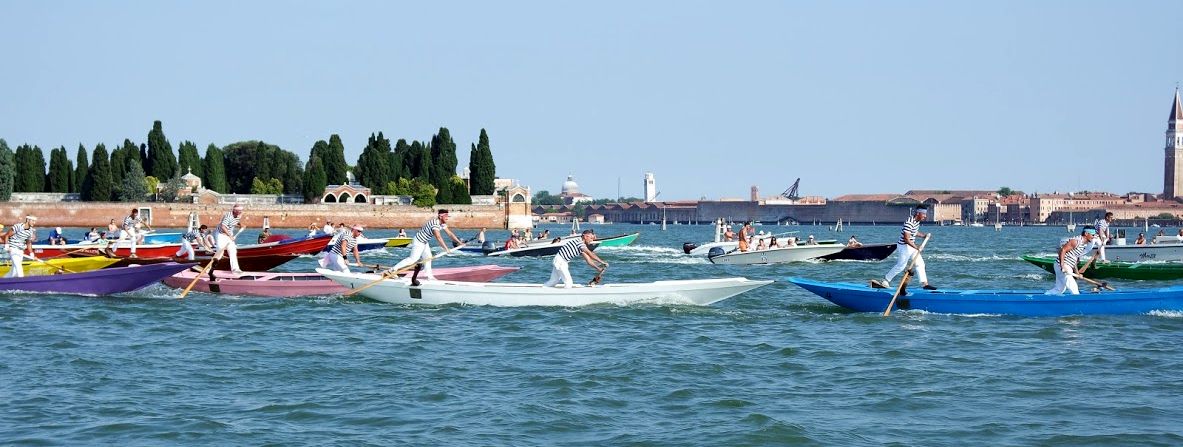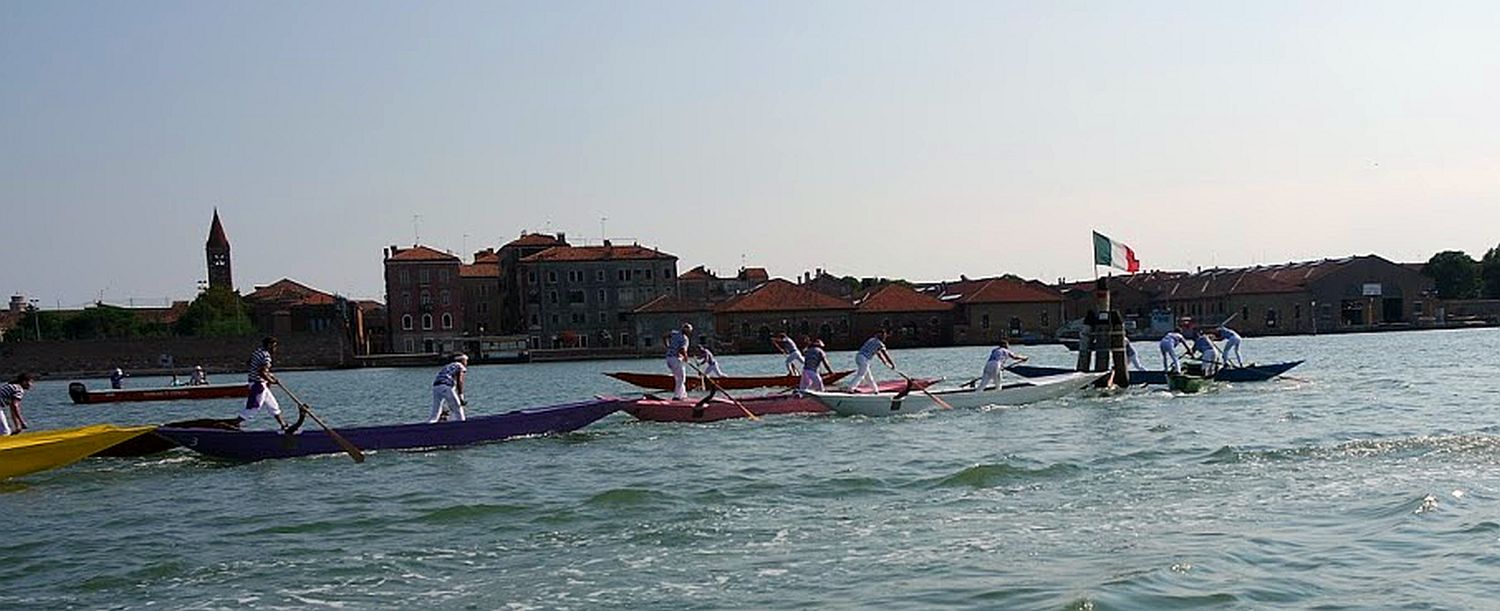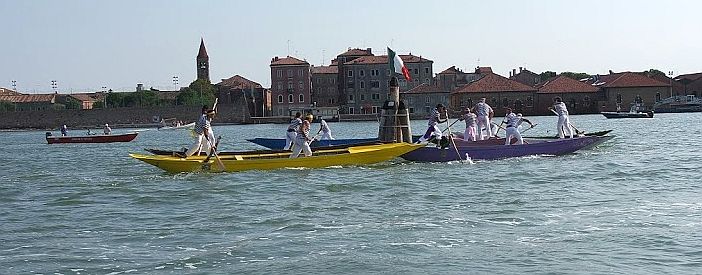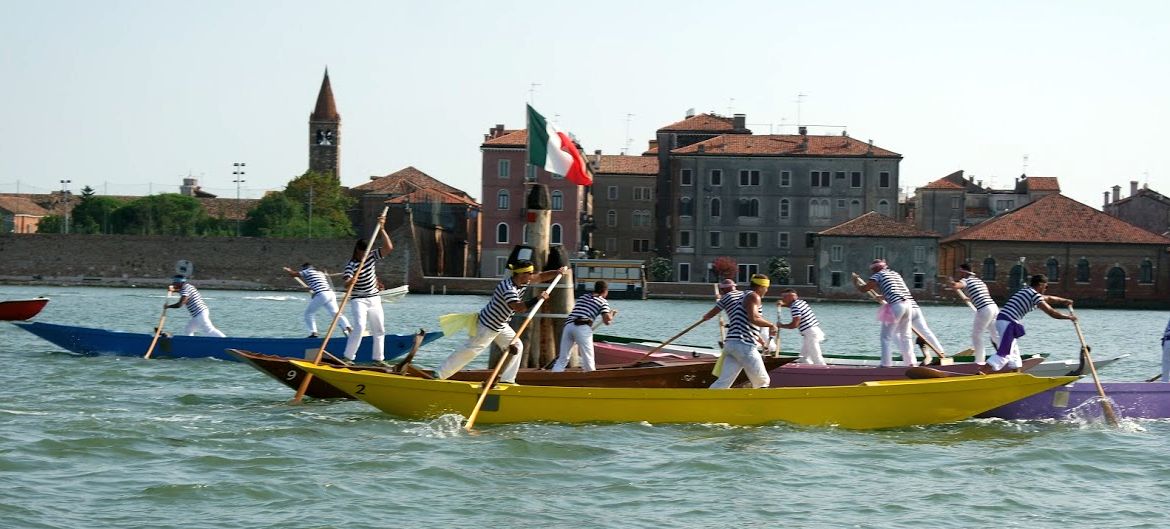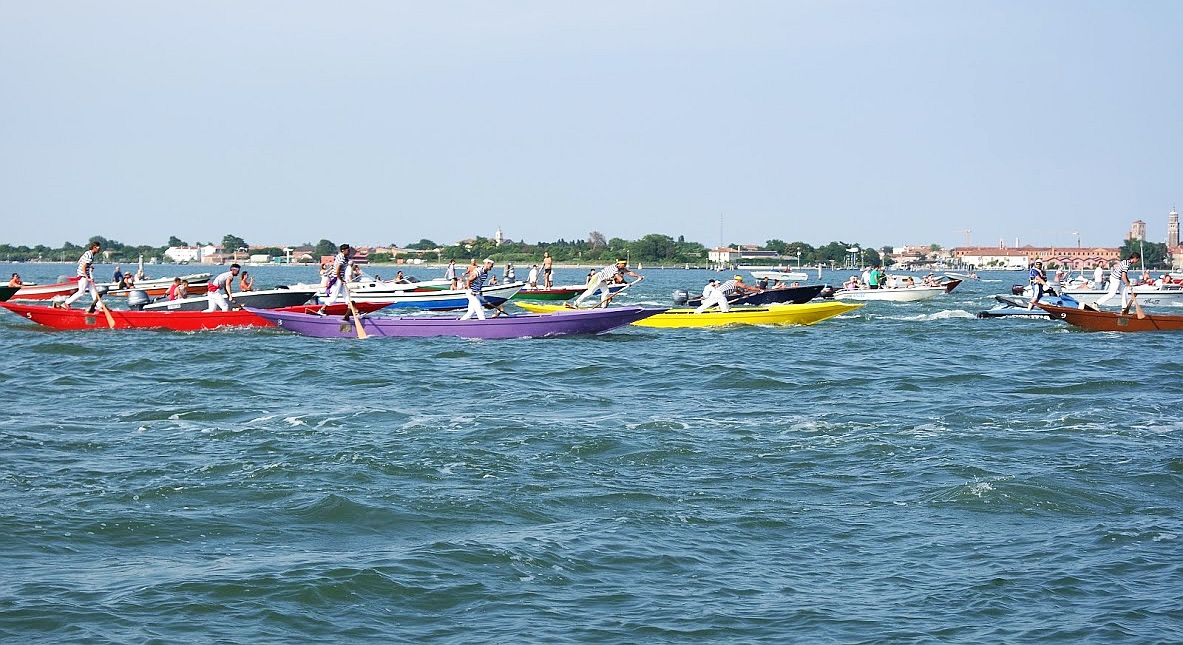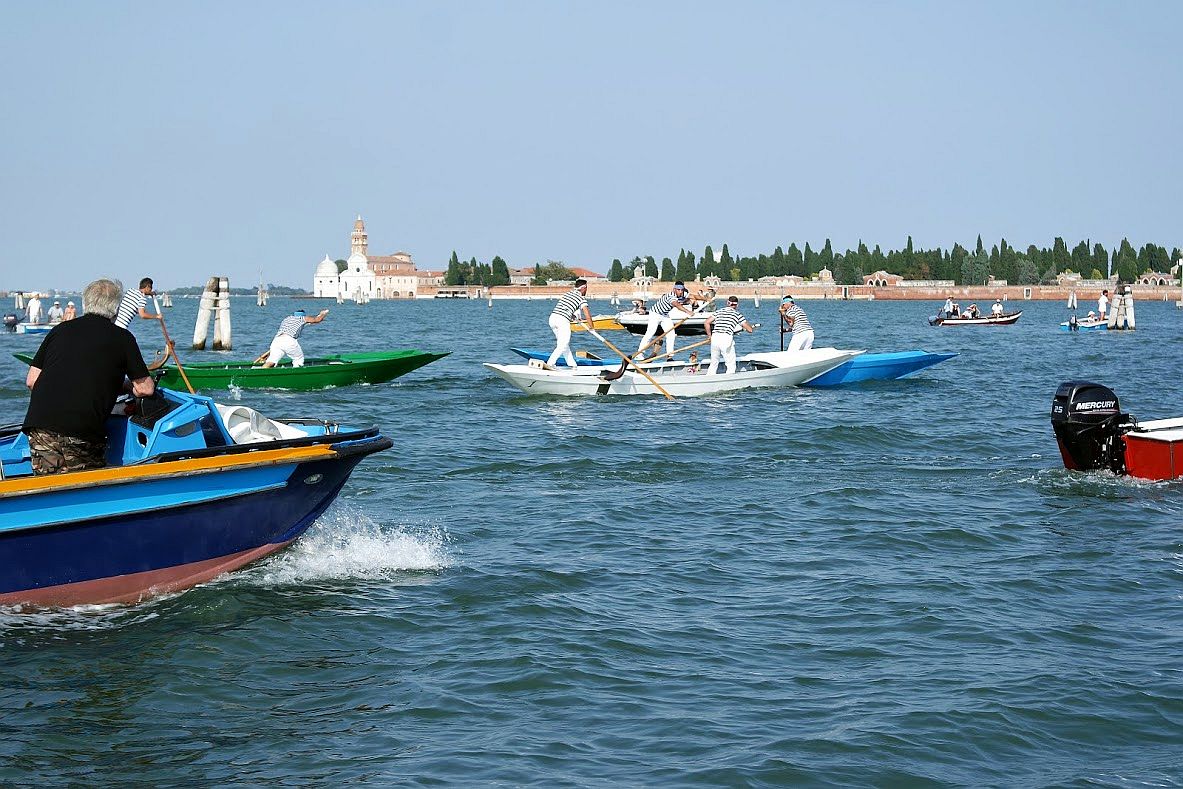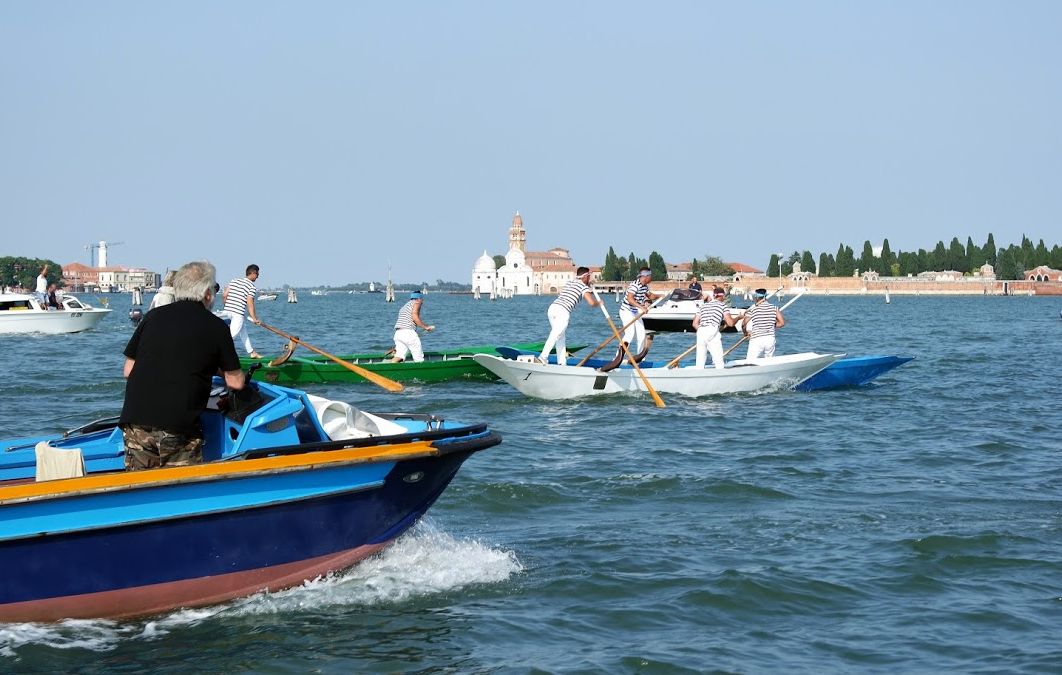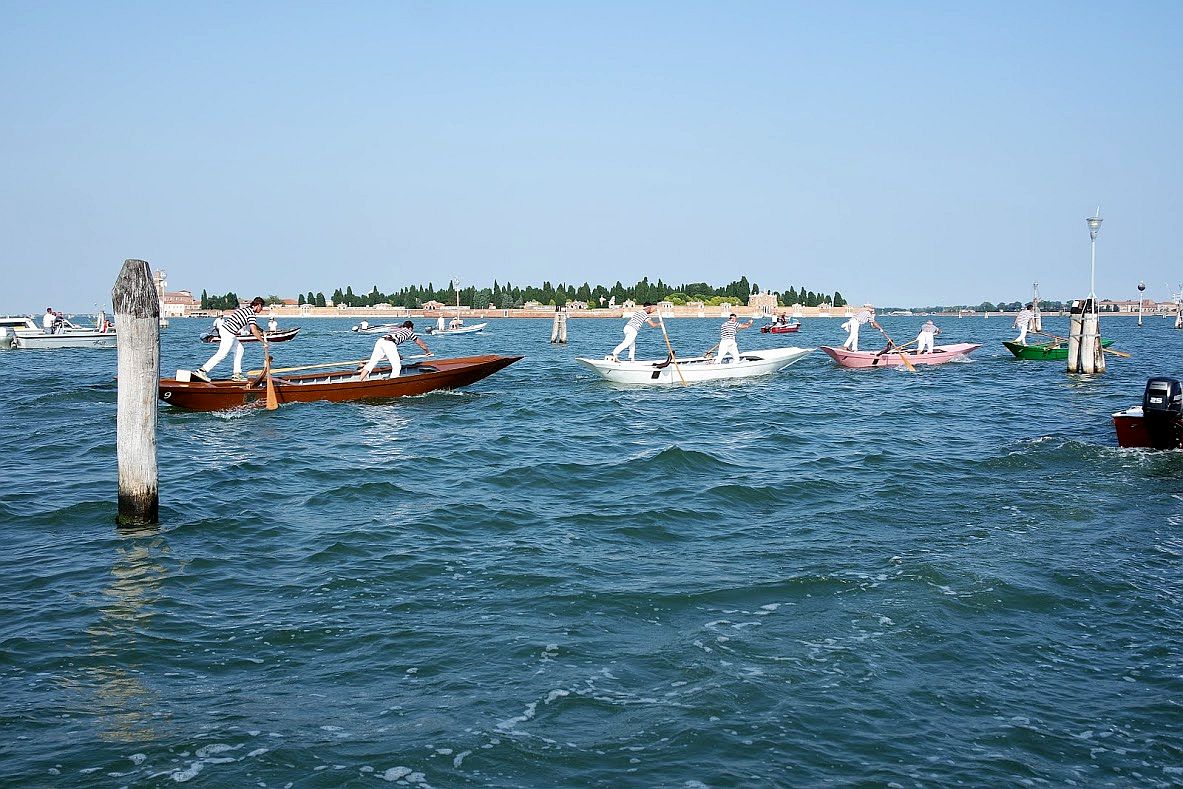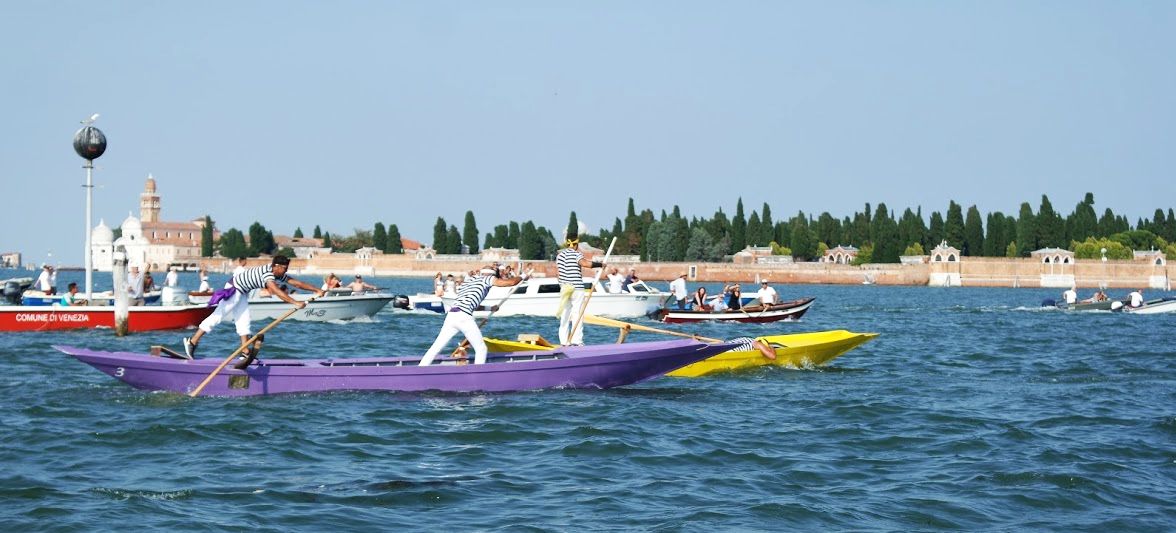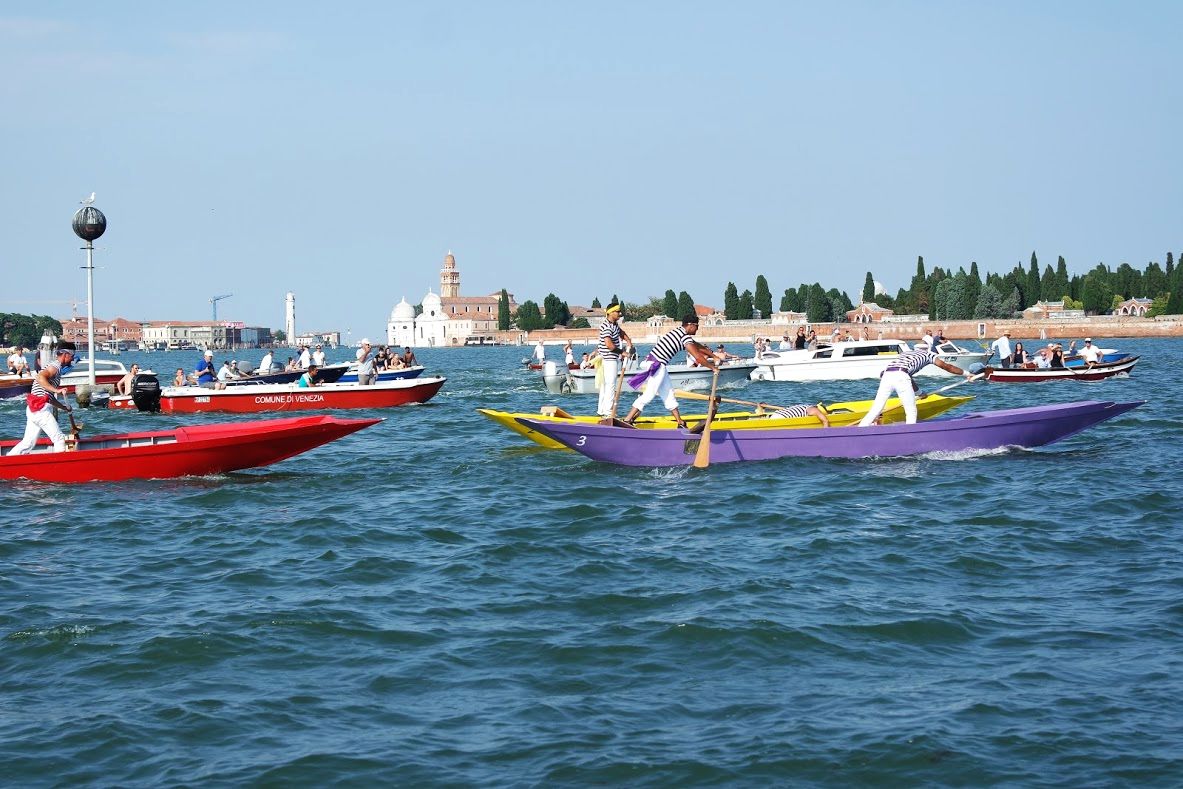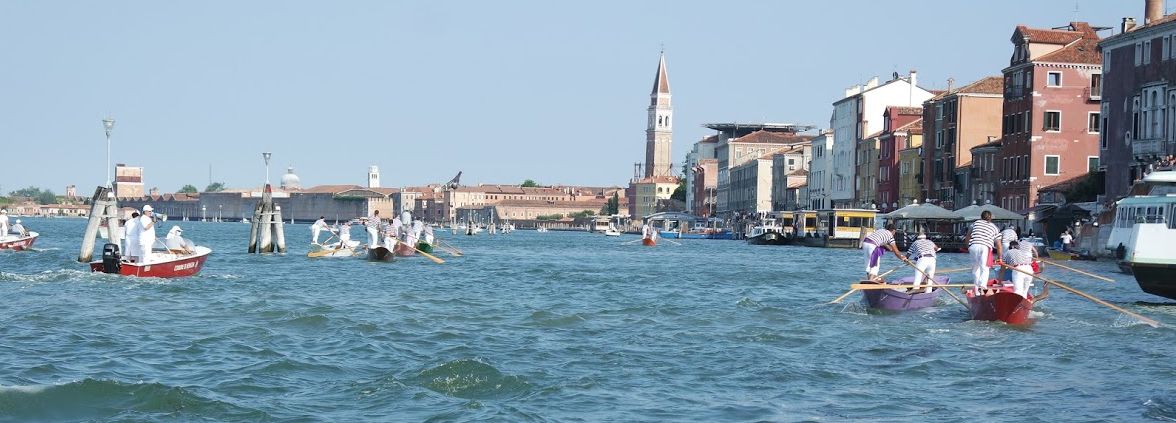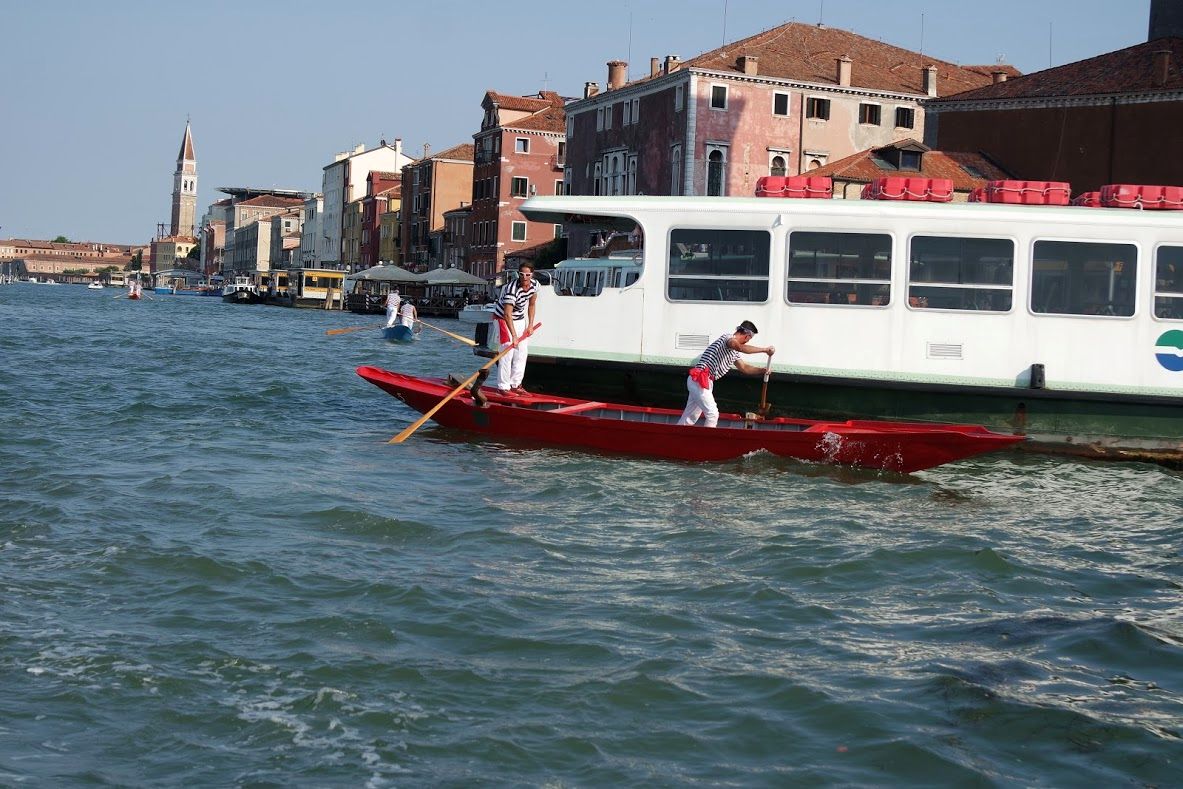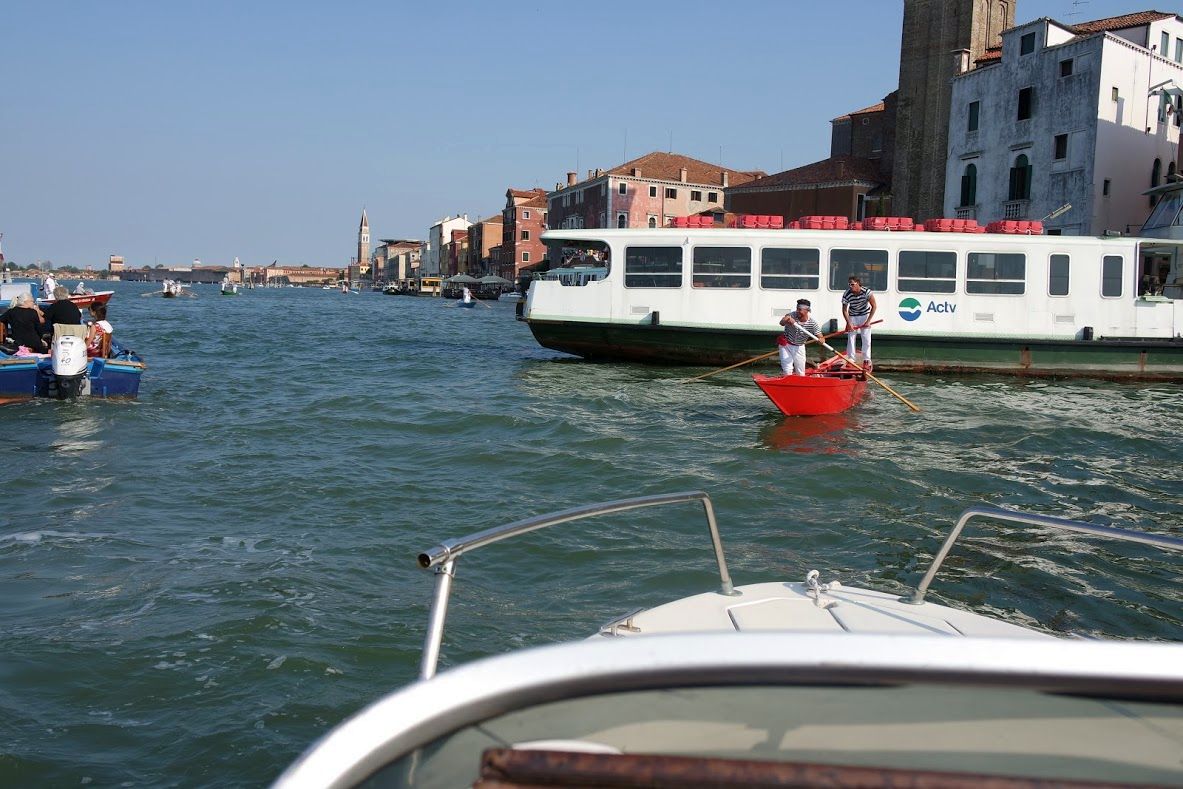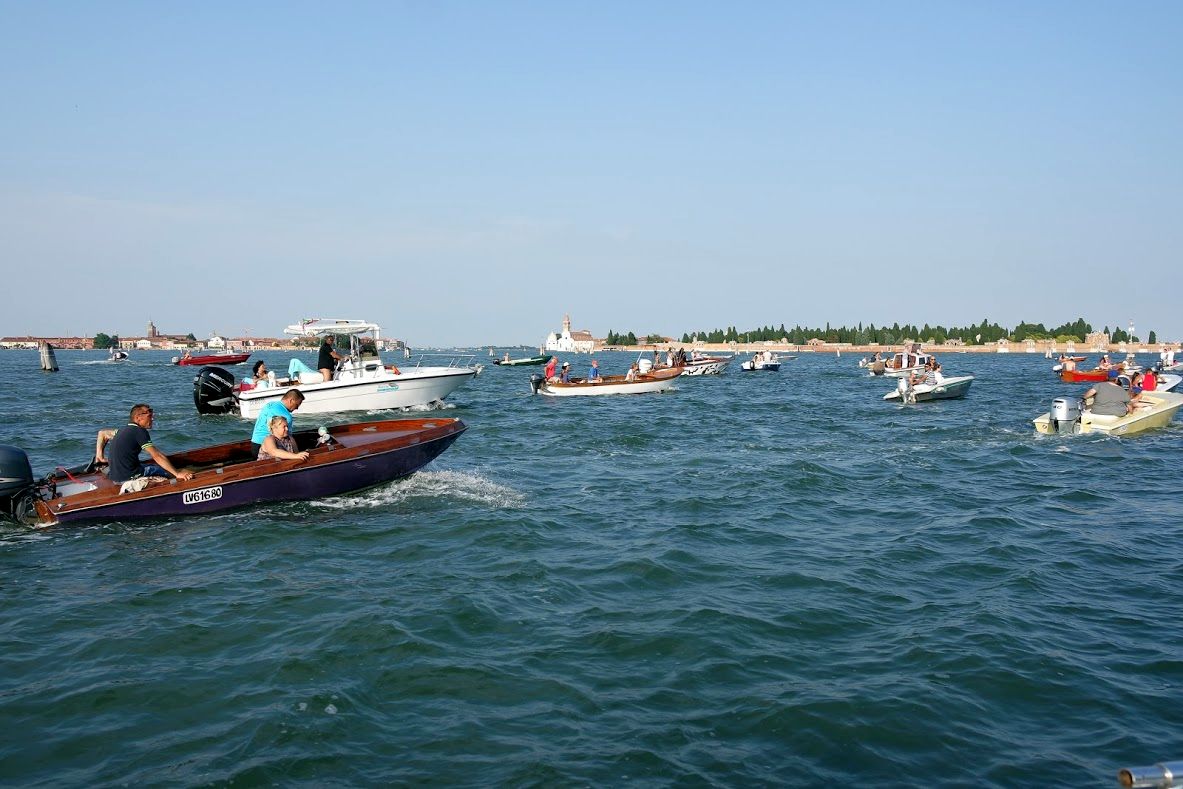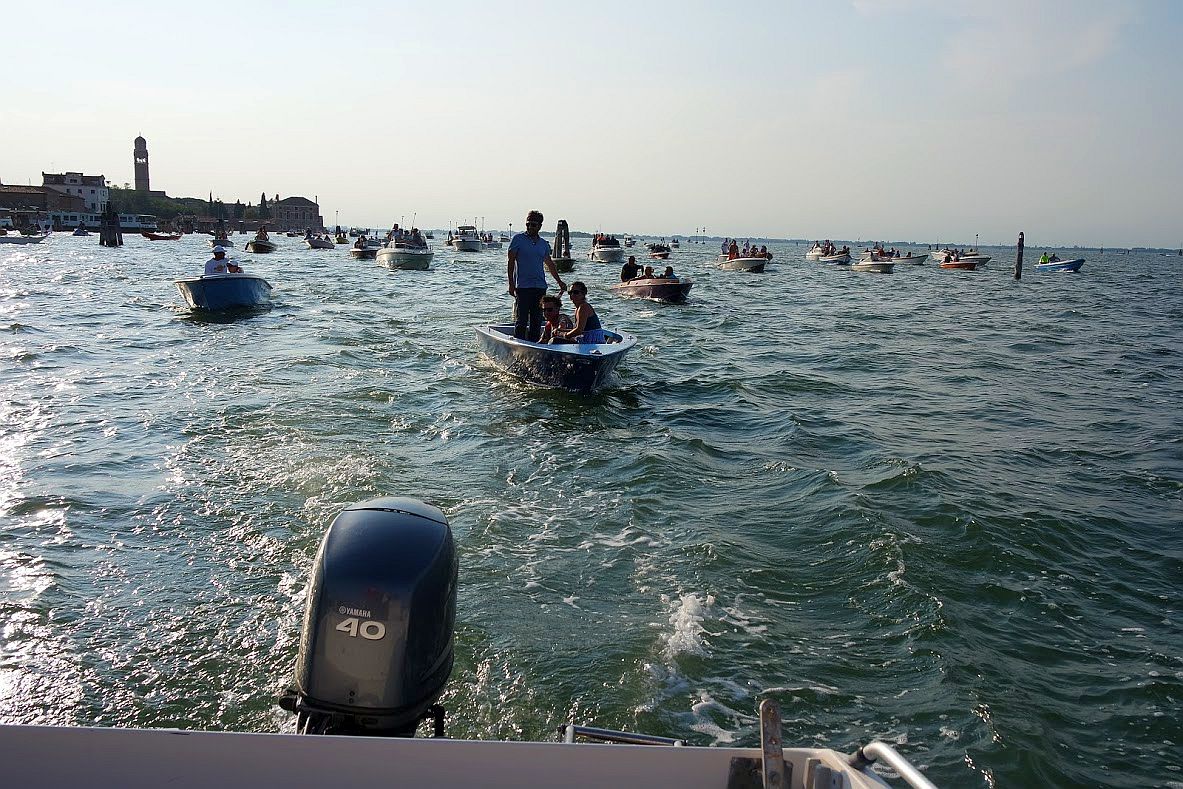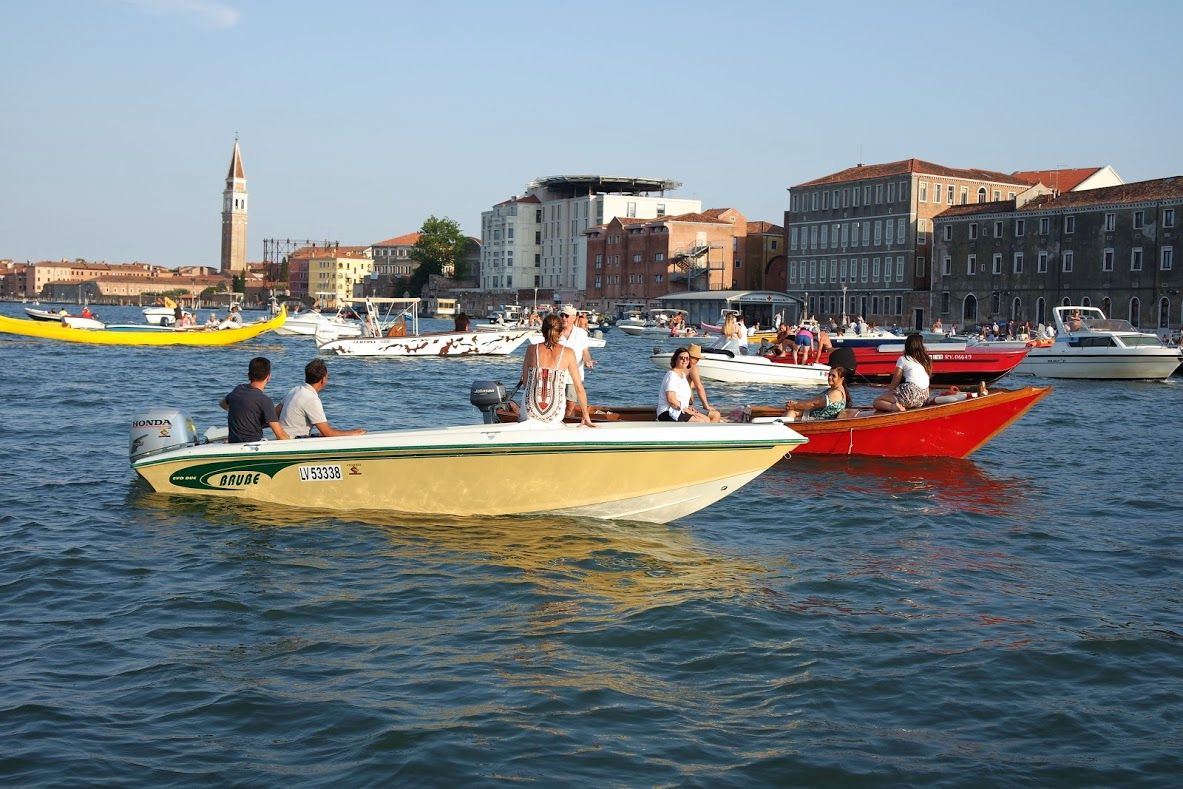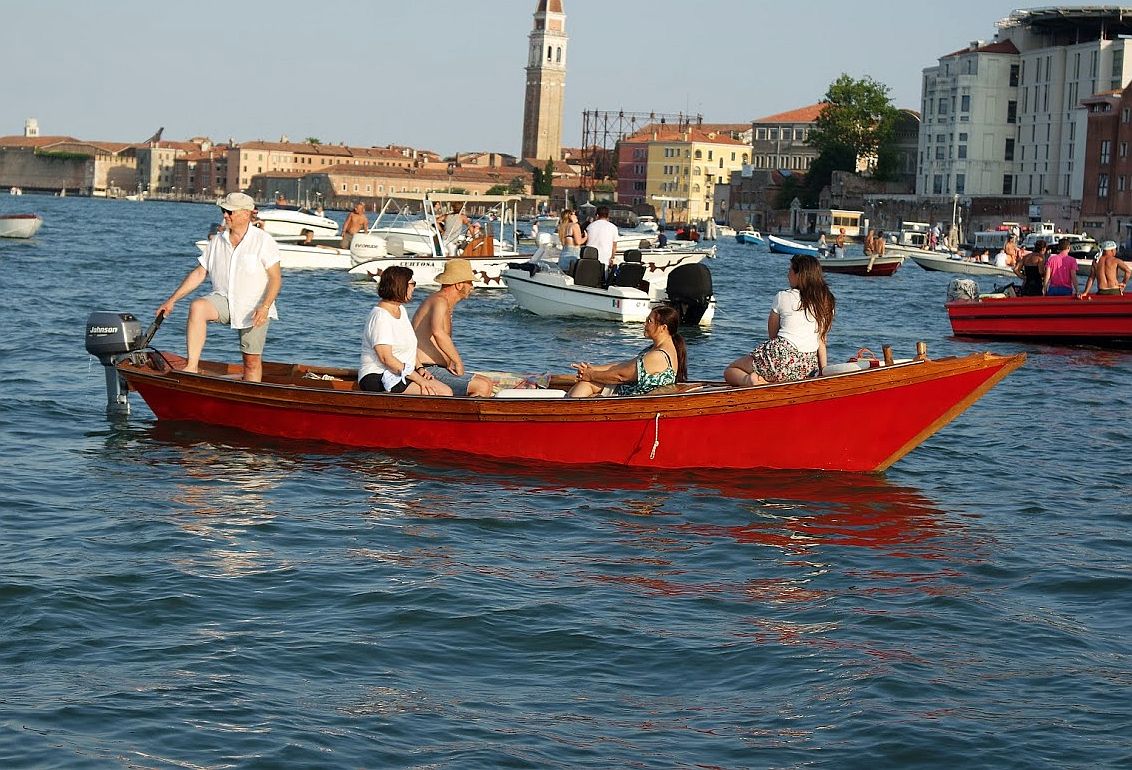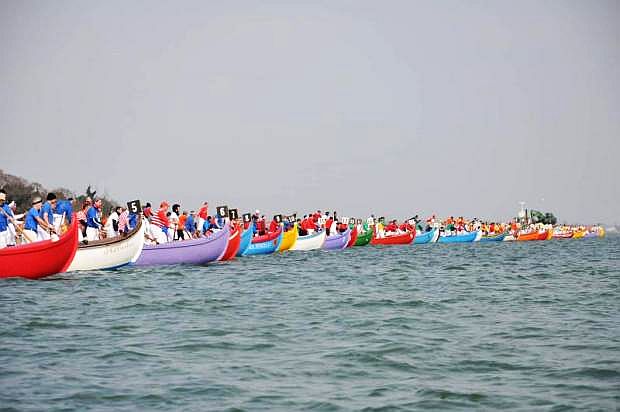
Last Sunday morning was special: Several very different events were rolled into one efficient package, and the sun came out and burned off the mist, and also there were leftovers.
The amalgamated elements were: A Venetian-rowing race, a deft promotion of the next Winter Olympics, and an appeal for world peace that was ingeniously linked to the preceding two. And there was food — oh, right. I already mentioned that.
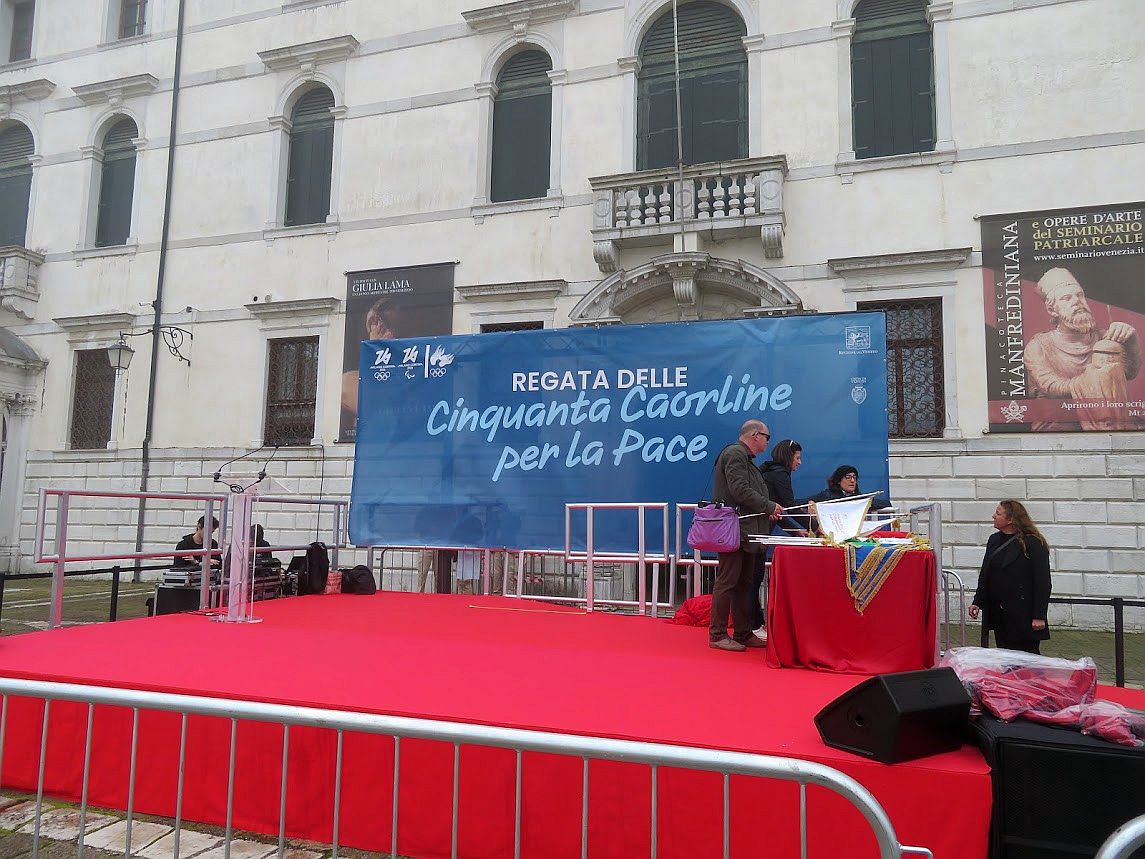
The race is called the “regata of the 50 caorlinas” to indicate the type and number of the boats involved. Allow me a bit of backstory to help you appreciate it more fully.
Some years ago (I’m estimating as many as 15), there was formed a type of consortium of the local rowing clubs called the Coordinamento Associazioni Remiere della Voga alla Veneta (Coordination of the Venetian Rowing Associations). The consortium still exists in a suspended-animation sort of way, but while it was young and glowing it organized an annual boat festival and race on Saint Andrew’s Day (Nov. 30, as you know) because Andrew is the patron saint of boatwrights, among many other things.
Almost all of the rowing clubs have at least one caorlina — a trusty boat created generations ago for lugging cargo around — and it’s very useful for fun because six people can row it even if they aren’t all at any particular level of skill. It’s a social sort of thing.
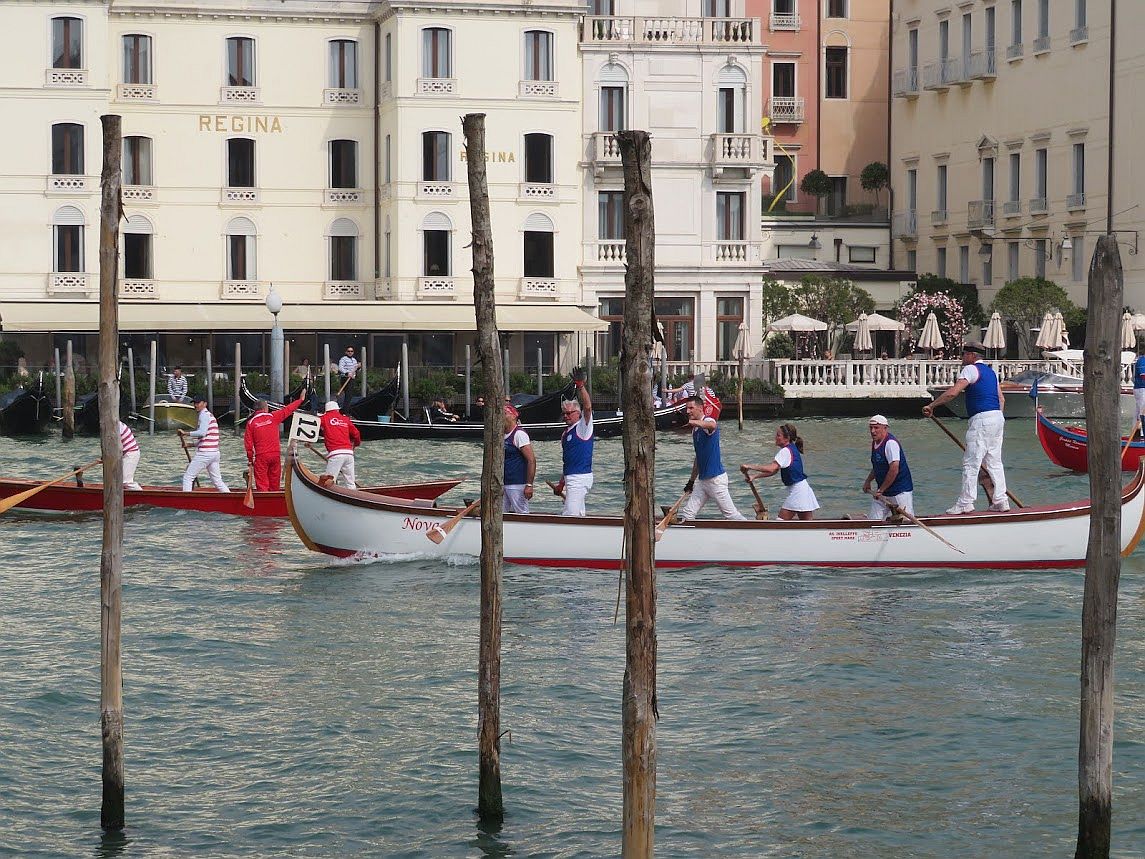
So for a few years this race was a great occasion for everybody to just throw themselves into the scrum. Your correspondent participated in one edition and our little crew was quite the mixed bag. I can’t remember our position at the finish — we were pretty far back. Maybe we’re still rowing. Your correspondent also participated for several years in the clubhouse kitchen, preparing and slinging vast amounts of pasta at the ravenous rowers and their relatives and friends afterward. The fame of this little jamboree spread across the Venetian-rowing world, so crews came from Cremona and Florence and Milan and Pavia, and so on. That’s how the number of participating boats rose to a mighty 50. If there was a party for just us rowers, that was it.
The last edition was held in 2018. Then Covid and the lockdown and many other things happened, and no more festa until now. And why now, considering that St. Andrew is on vacation in the month of April? Because April 6 was designated by the United Nations as the International Day of Sport for Development and Peace. And so once again, Venice provides the perfect setting for initiatives or ceremonies that have little, if anything, to do with it.
I’m thinking back to the years when one of the more active and public members of the Coordinamento was vehement in his opposition to traditional rowing events being exploited for touristic or other purposes of promotion. He would shout “We’re not figuranti!” (the costumed performers who parade in period dress to enliven certain events or ceremonies).
But here, in the fullness of time, it appears that what was once something truly local, that had nothing to do with anything but its participants, was suddenly the perfect way to draw attention to other things that have nothing to do with the city or its people. This, without a squeak from the former paladin of Venetian-ness. They like to say that Venice is the world city of peace, but I think it’s more like the world city of irony. But let’s get back to the events.
This brings us to the second element: Sport. Not Venetian rowing, per se, but the 2026 Winter Olympics. The venues will be divided between two regions — Lombardy and Veneto — and naturally Cortina d’Ampezzo, the Pearl of the Dolomites, represents the Veneto. Cortina is arguably one of the most famous names in winter sports, having hosted the winter Olympics in 1956. So Sunday’s race was an extra-Venetian way of publicizing the Olympics, and also — did you notice? — the Veneto Region. It was a match made, if not in heaven, certainly in many offices, bars and restaurants.
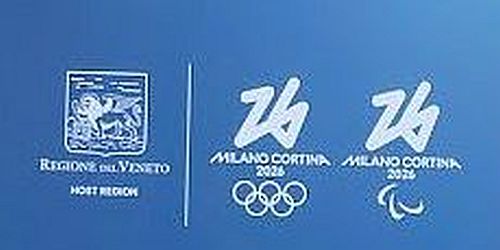
Third and final element: Peace. We all need it and want it, and the Olympics were a fine reason to ask Antonio Silvio Calo’, president of the Fondazione Venezia per la Ricerca sulla Pace (Venice Foundation for Research on Peace) for his thoughts on the subject.
Bonus points: The regional councilor for sport, Cristiano Corazzari, drew our attention to the “Ancient memory of the ‘Olympic truce,’ that it should continue to be the central theme to evoke the profound value of the Olympics.” If the long jump and the luge can promote peace, I say let’s extend the Olympic truce for the next 250 years.
Fun fact: The sacred truce did not put a stop to all warfare, only to conflicts which hindered the games. (Always check the fine print before signing anything, especially a truce.) The truce protected travelers on their way to the sanctuary and only forbade military operations against and by the organizing city. But even this truce was breakable. In 420 BC, the Spartans were excluded from the Olympic games because they had attacked a part of the Elean territory. In 364 BC, Arcadian soldiers even attacked the holy domain of Olympia during the games. So seek it as you will, peace appears to remain an elusive and fickle ideal.
Back to Venice. Boats, Olympics, and peace got wrapped up together, and then we ate bigoli in salsa and went home. The caorlinas and their rowers went home, the Olympics went back to the offices and the construction sites, and peace is yet to be found. If only we could remember where we put it the last time we used it.
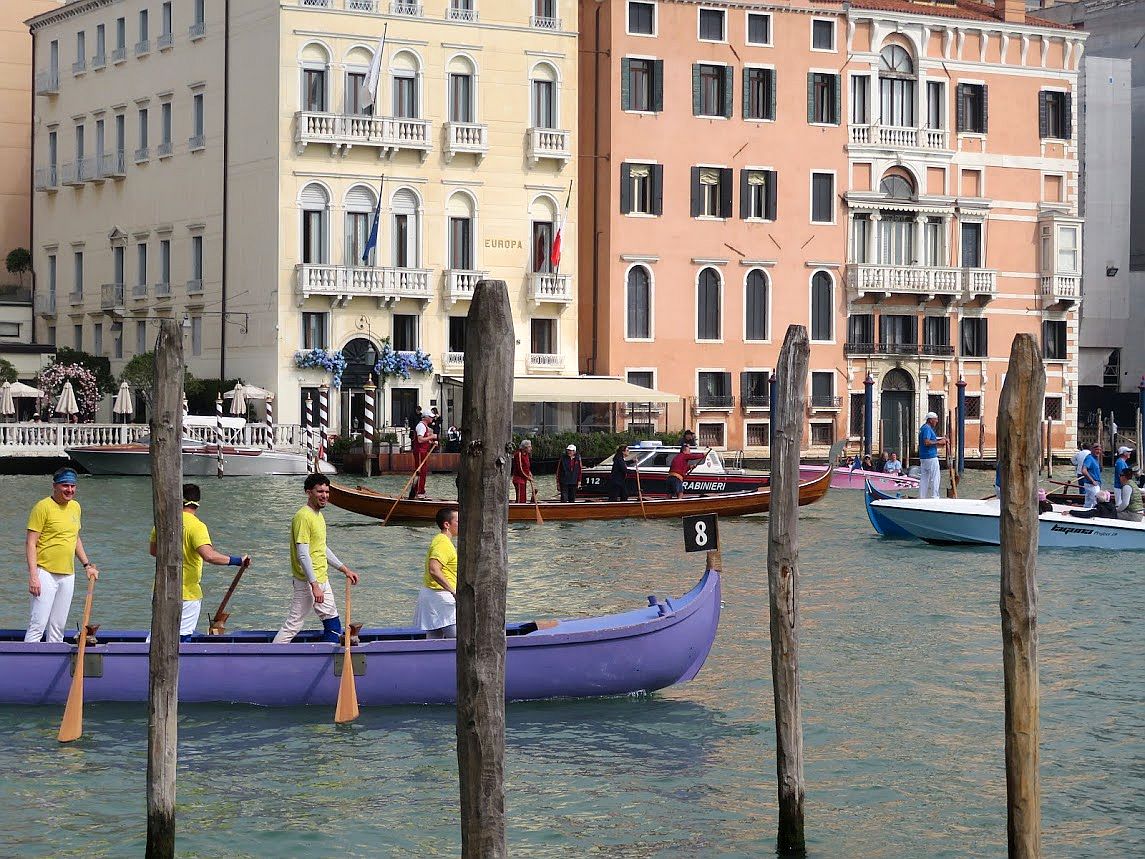
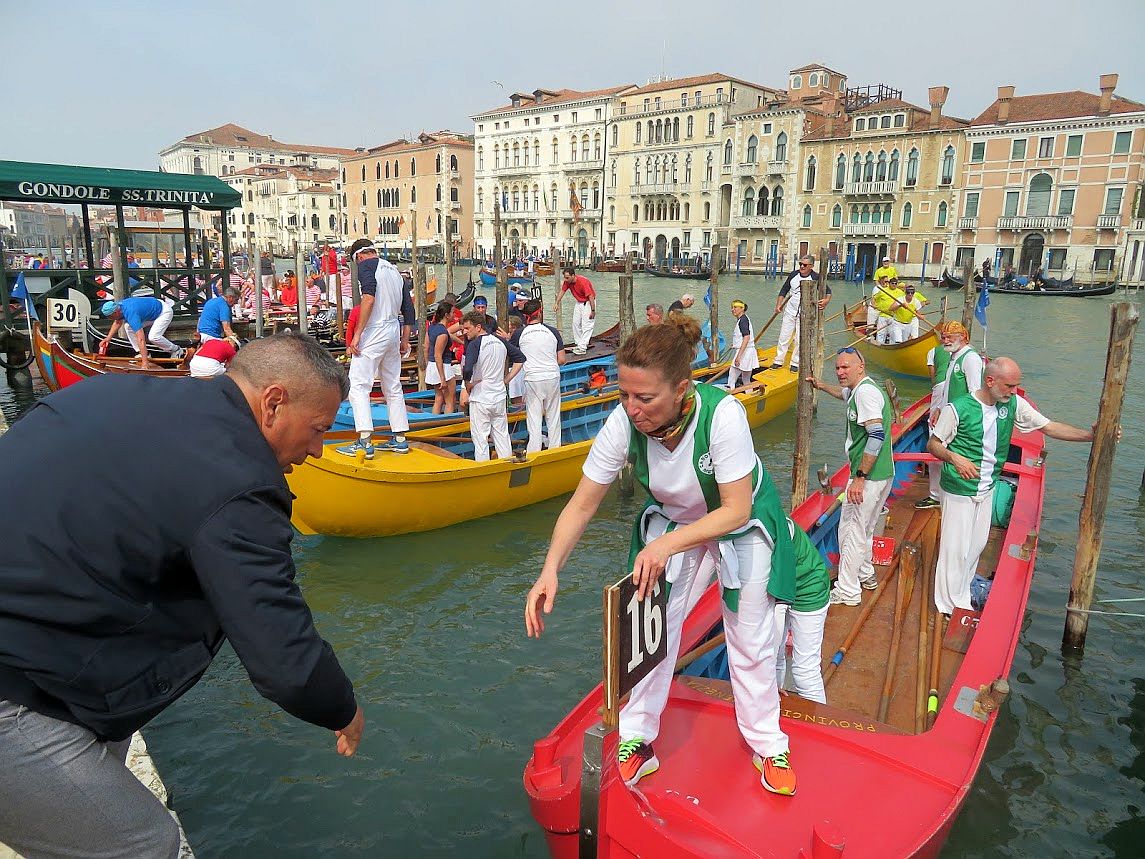
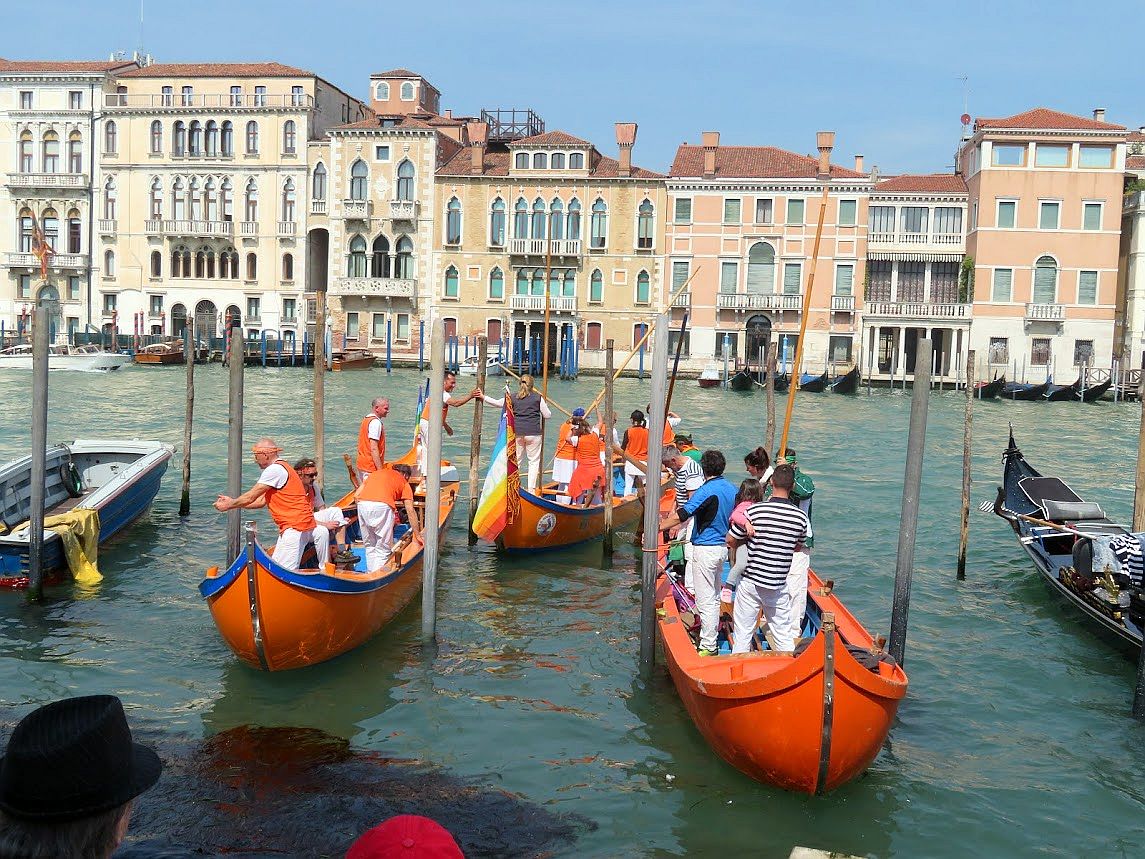
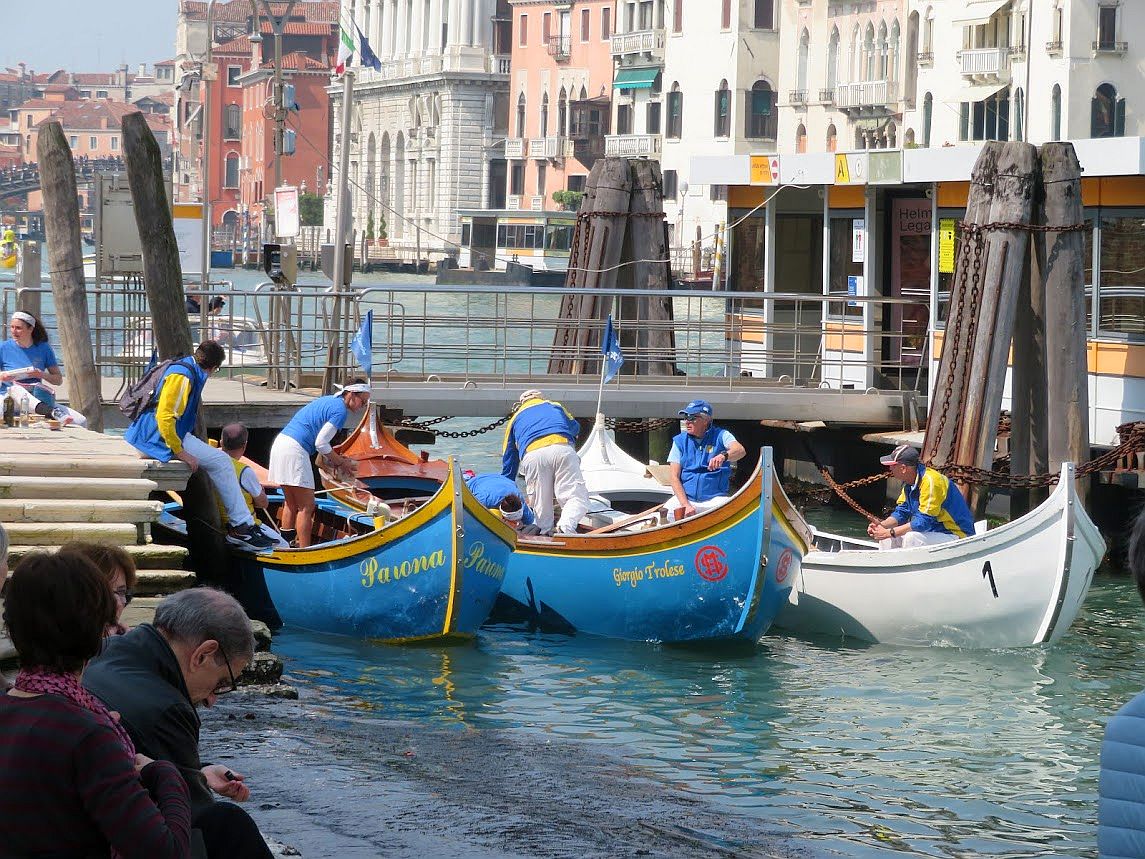


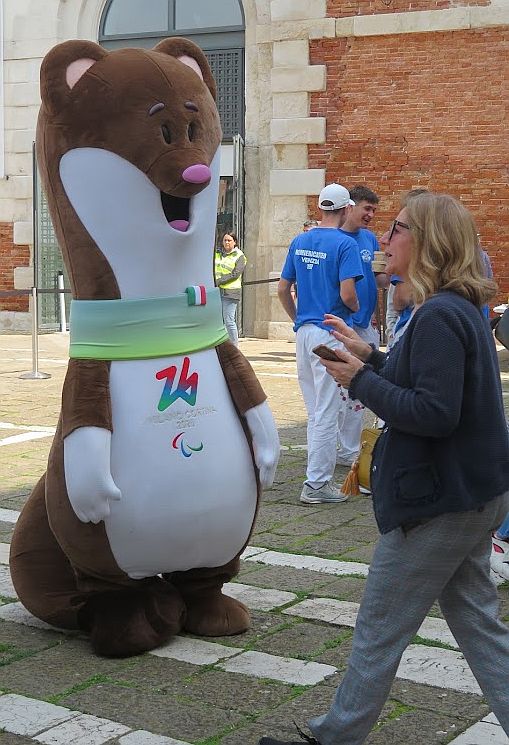
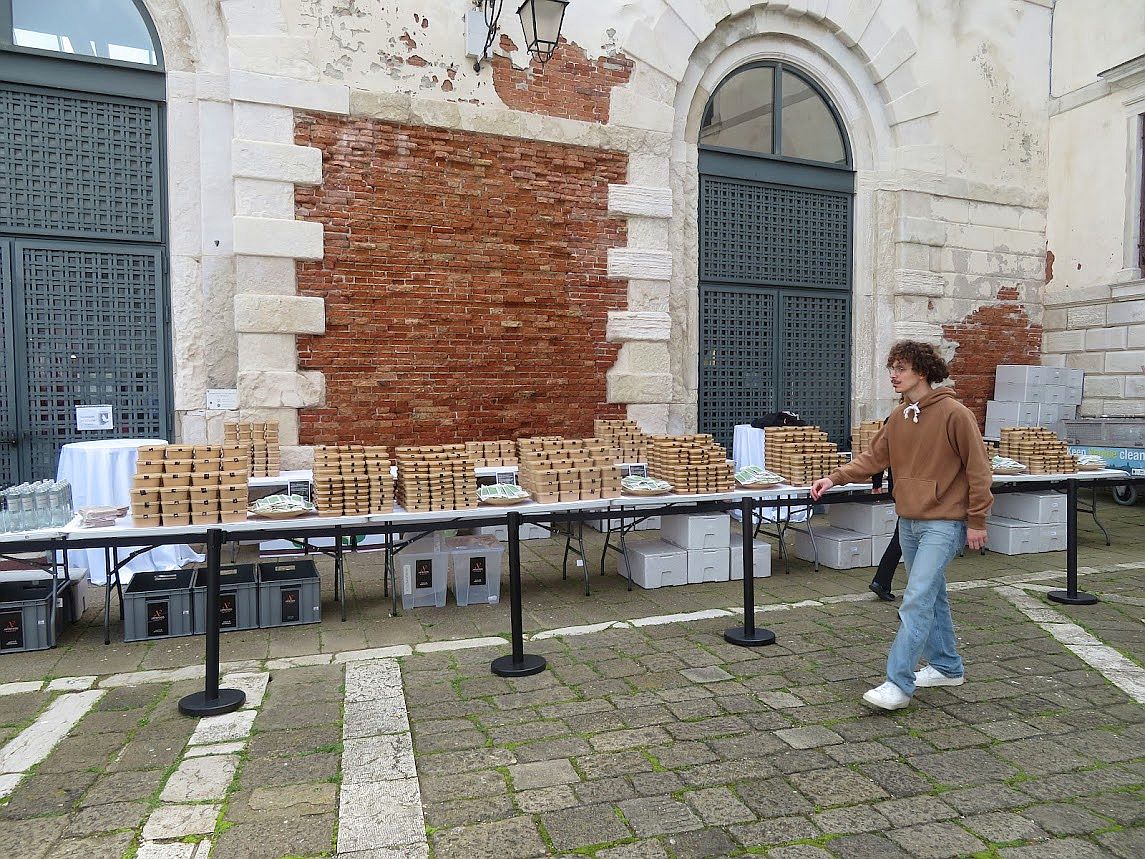
If you’re in the mood to live the race, here goes. The race itself begins at about 6:00.

